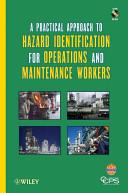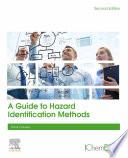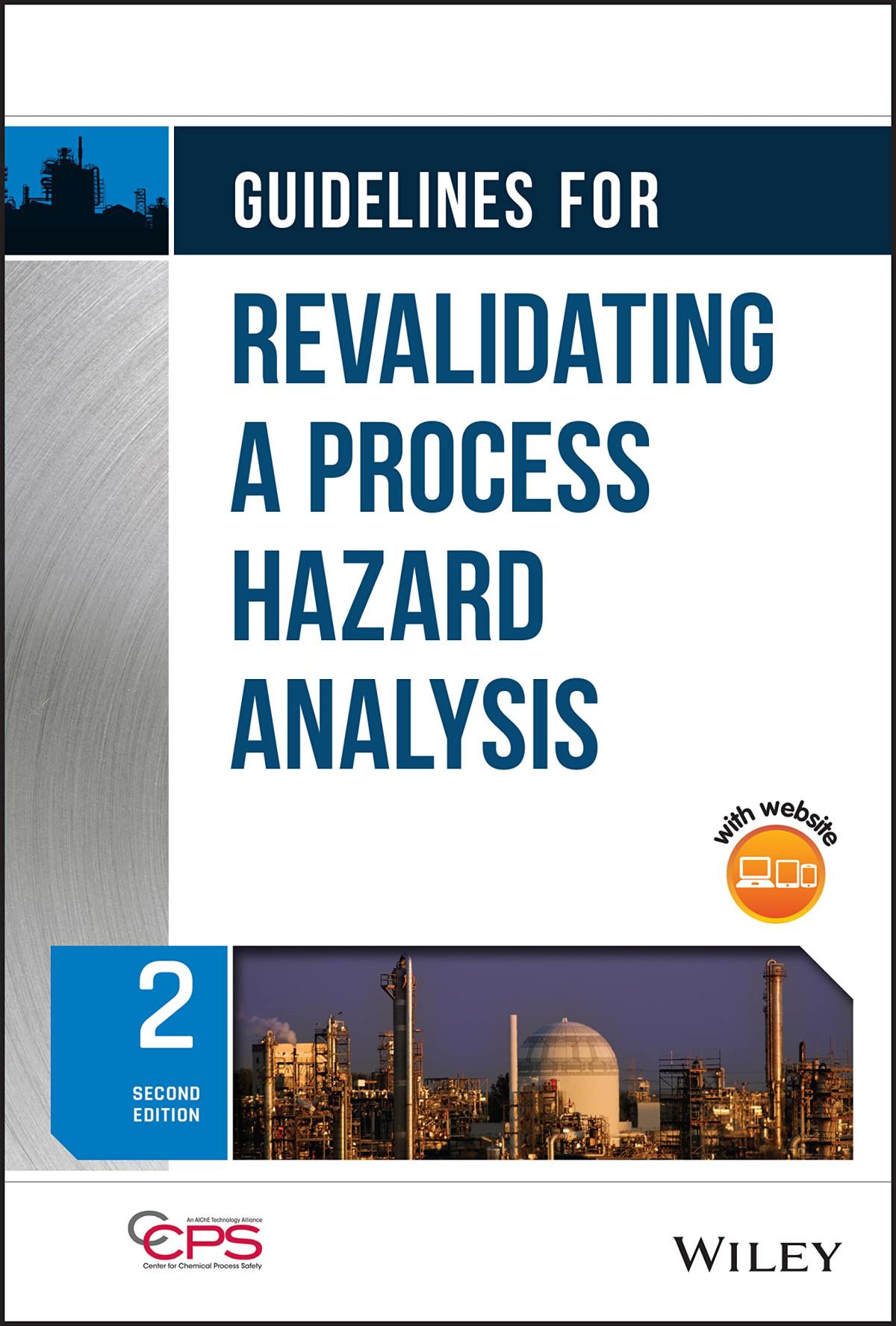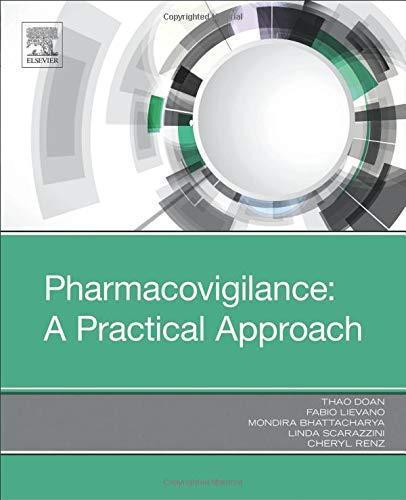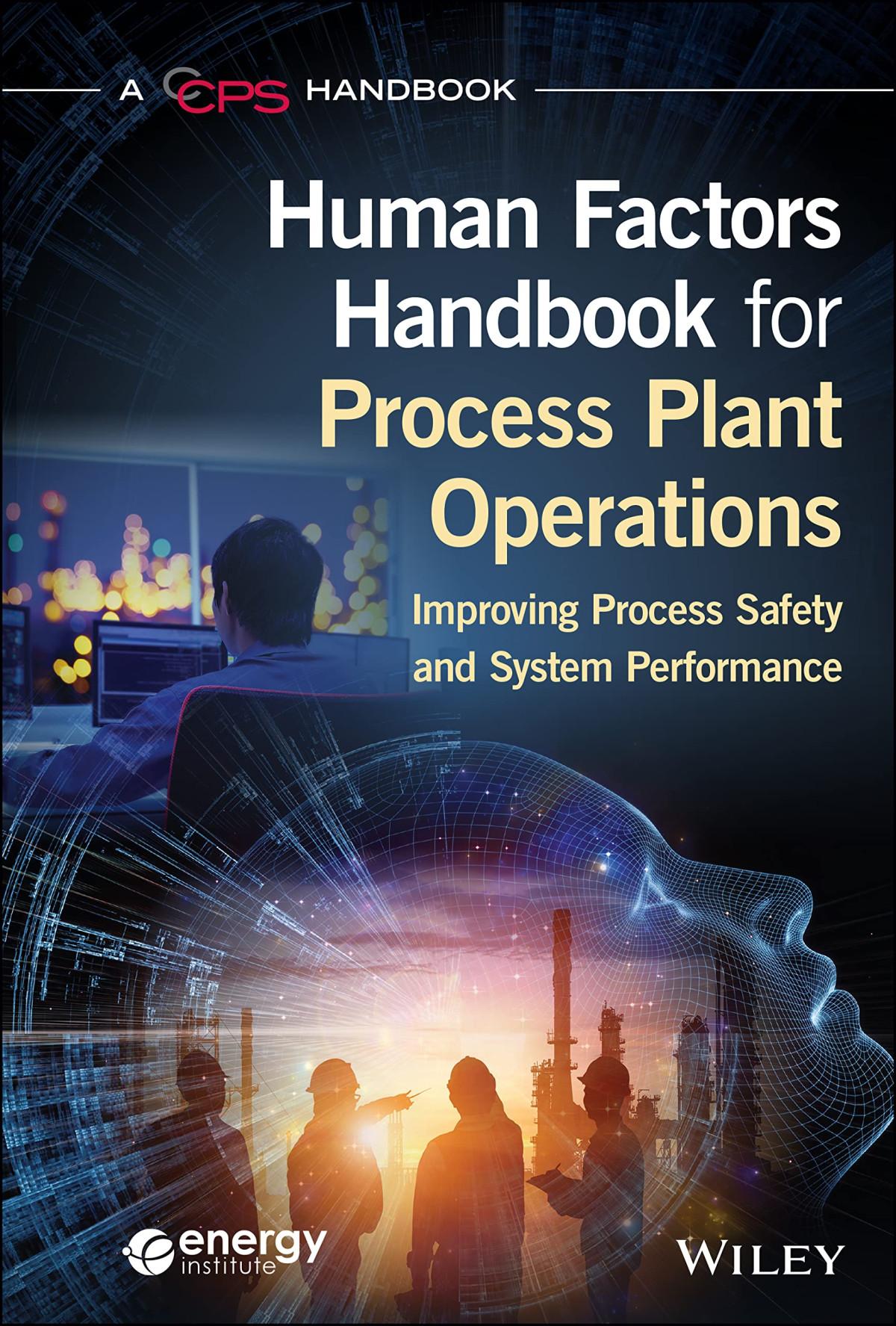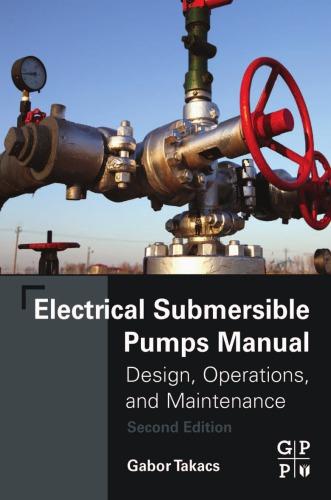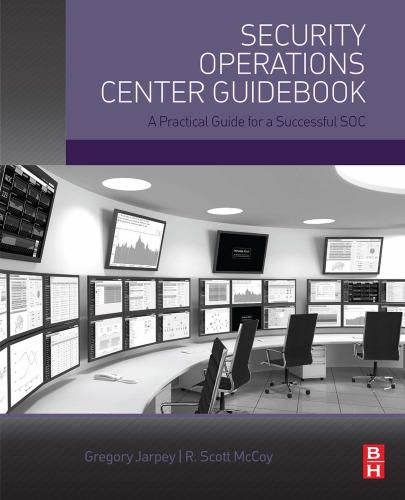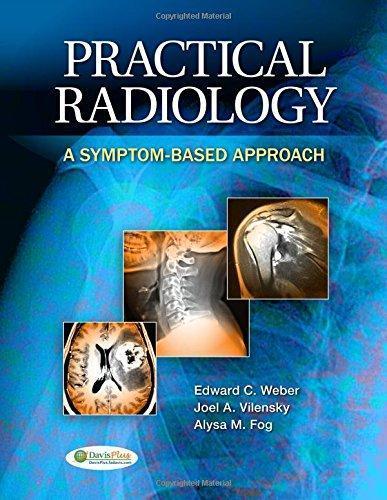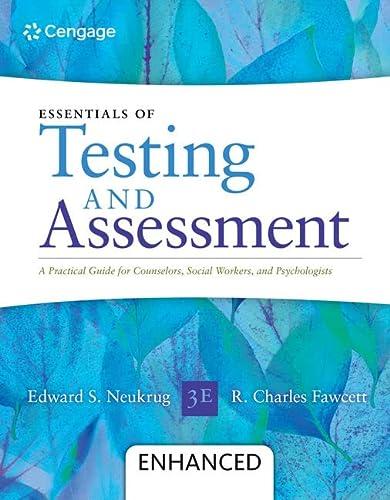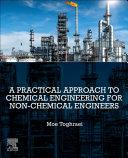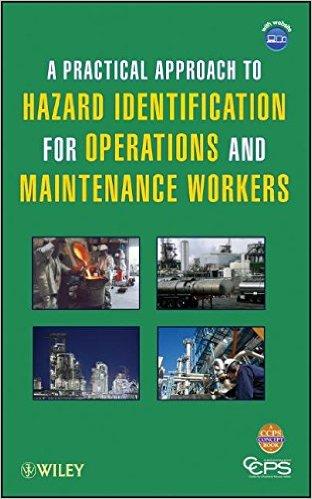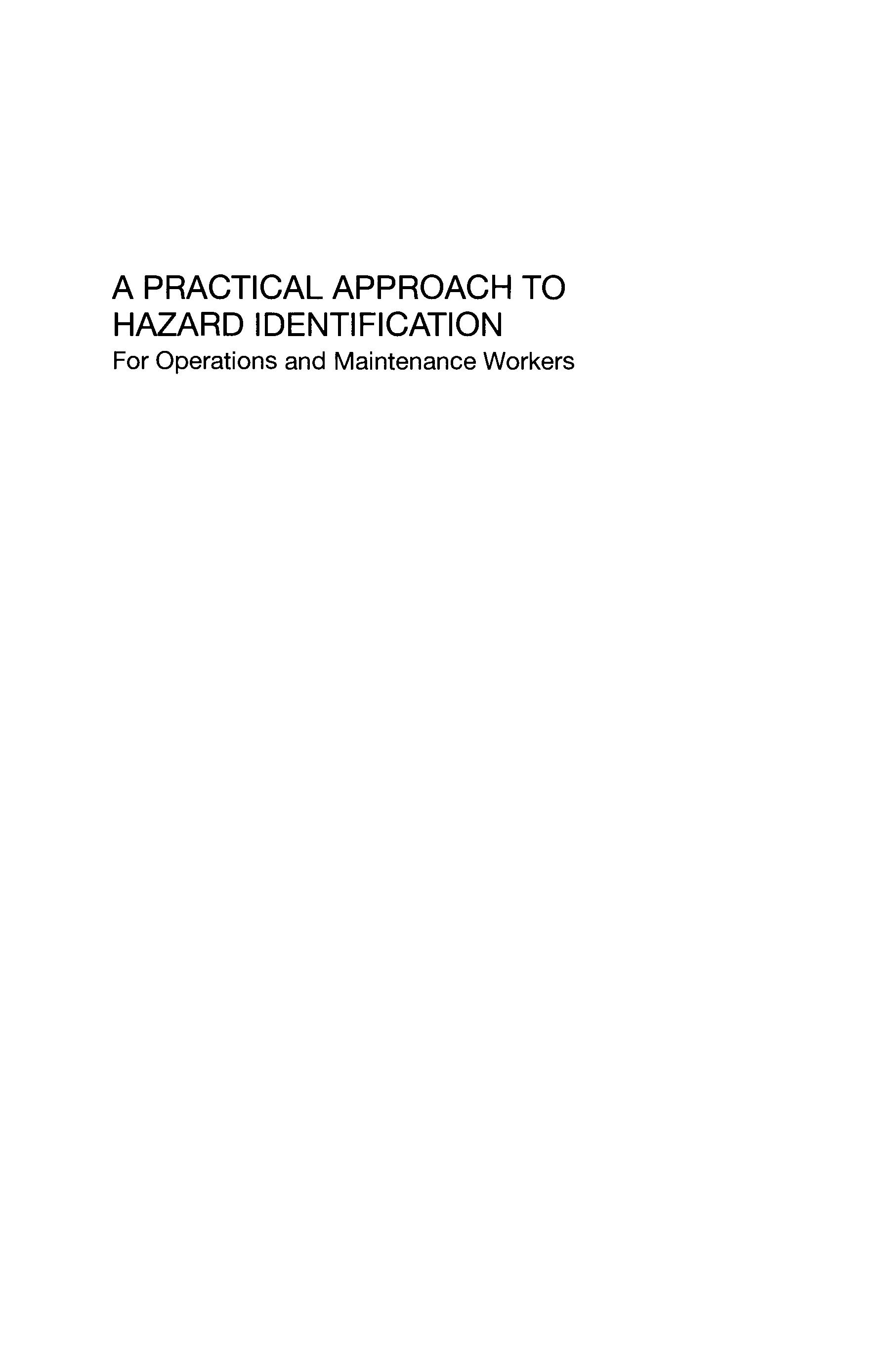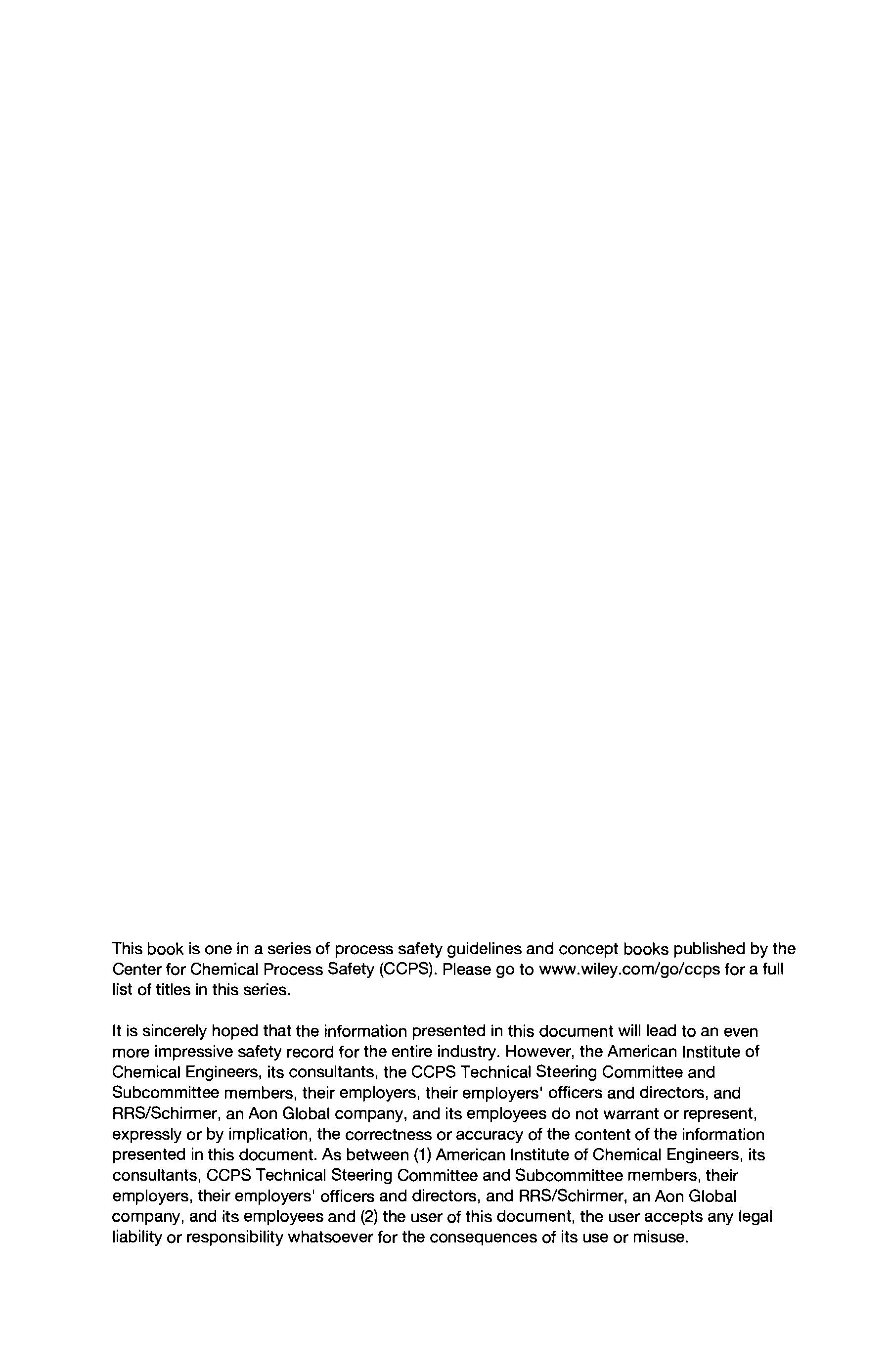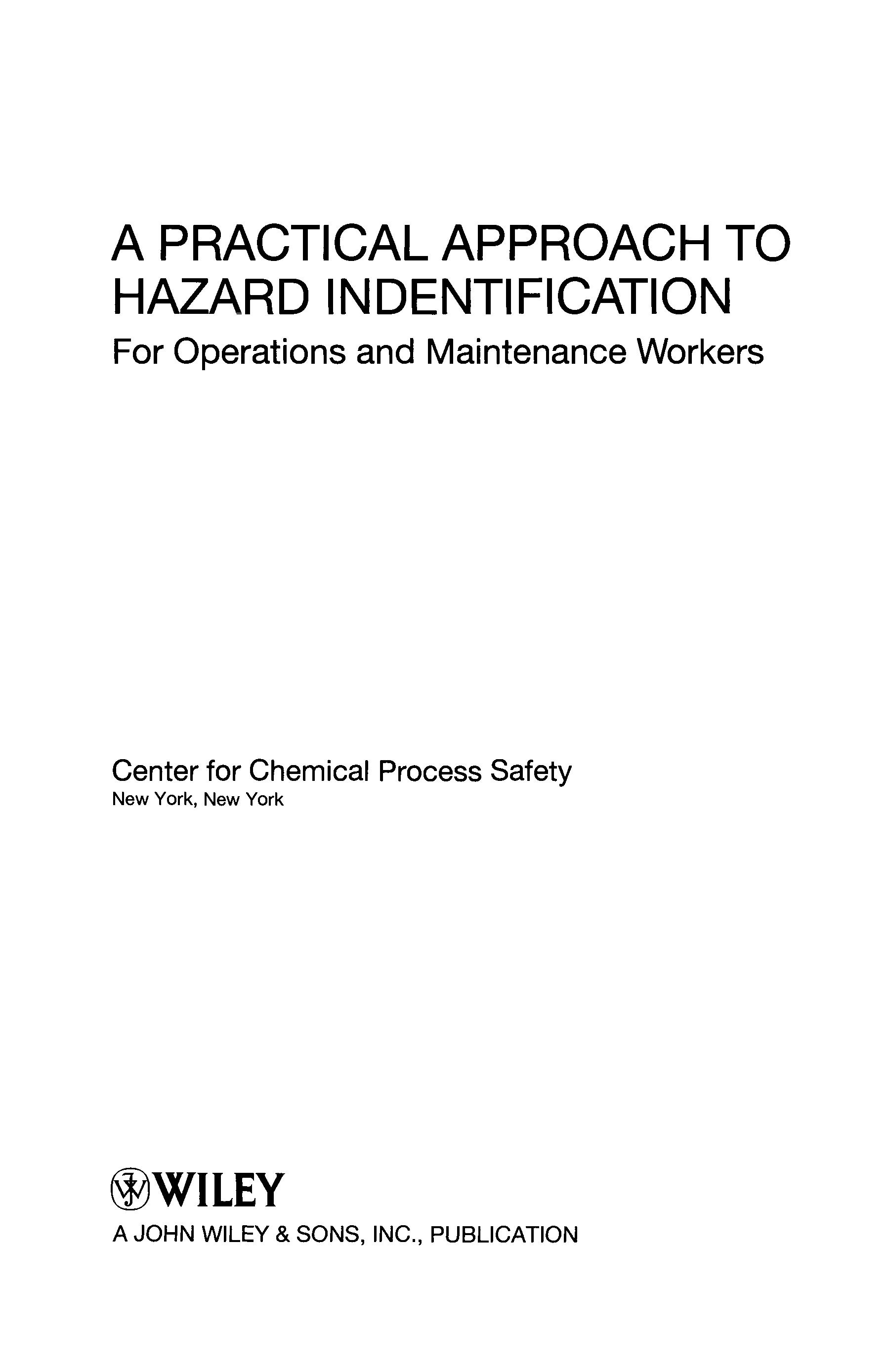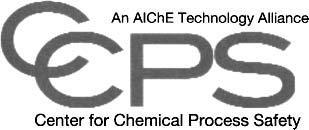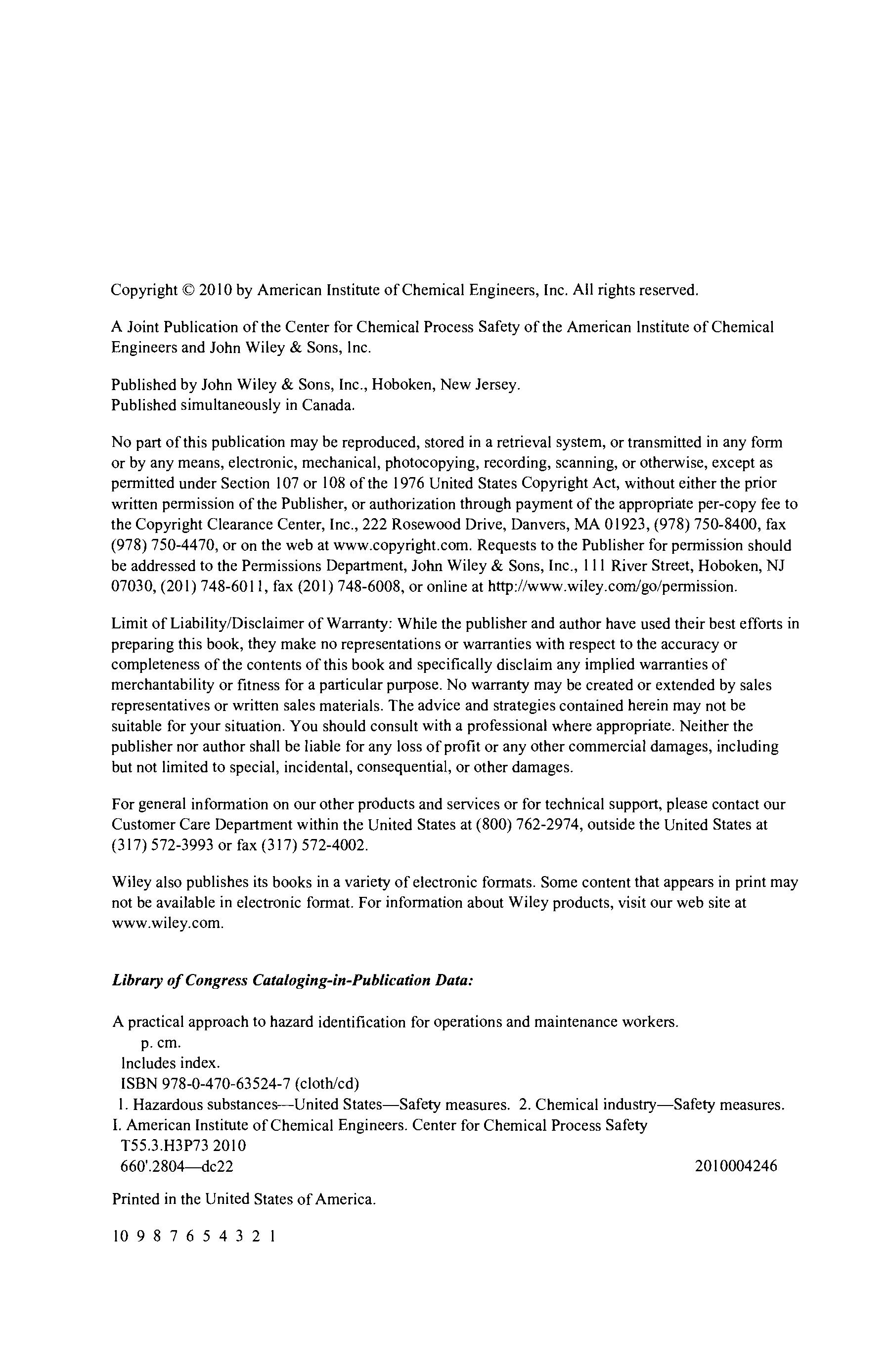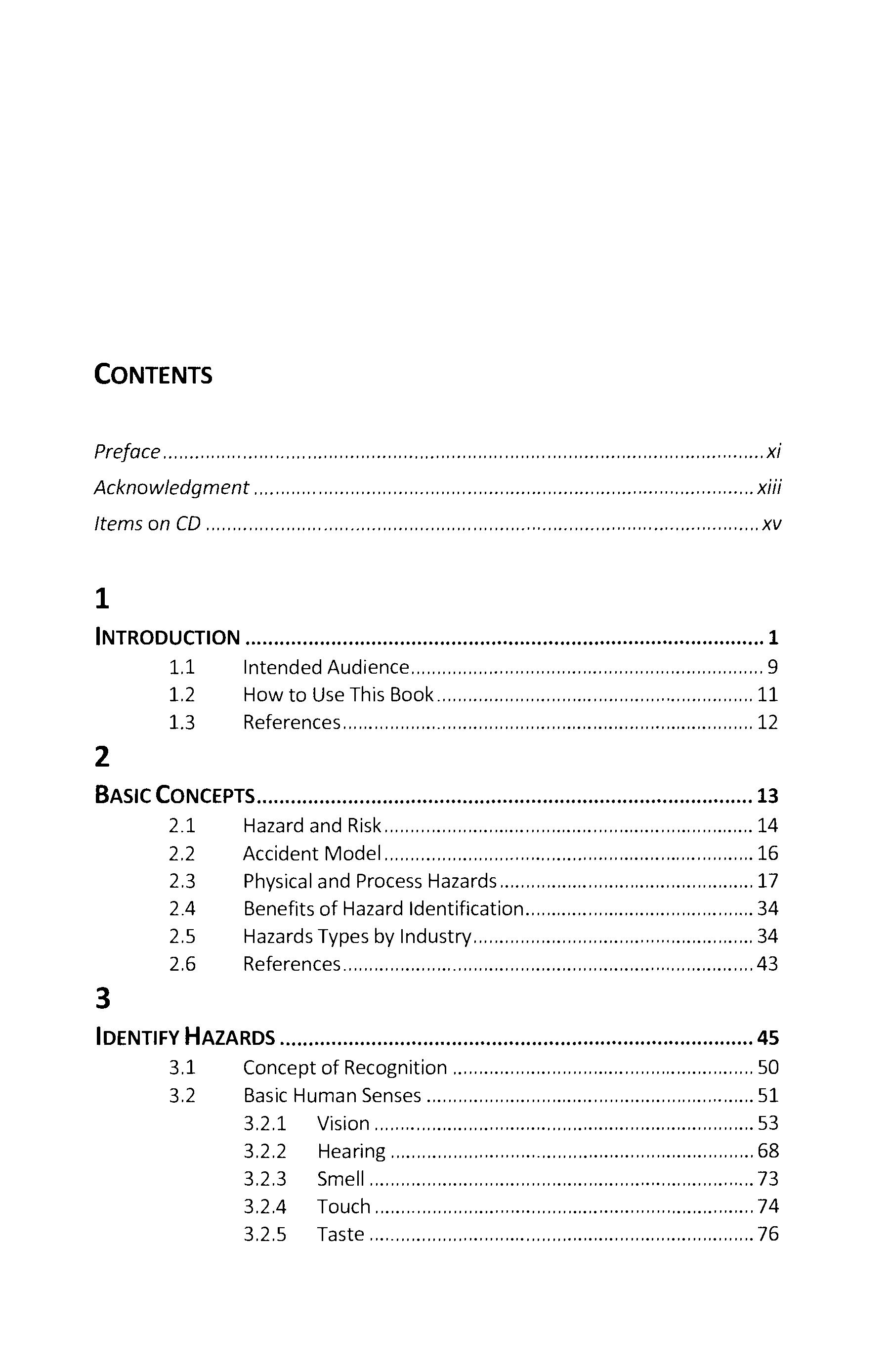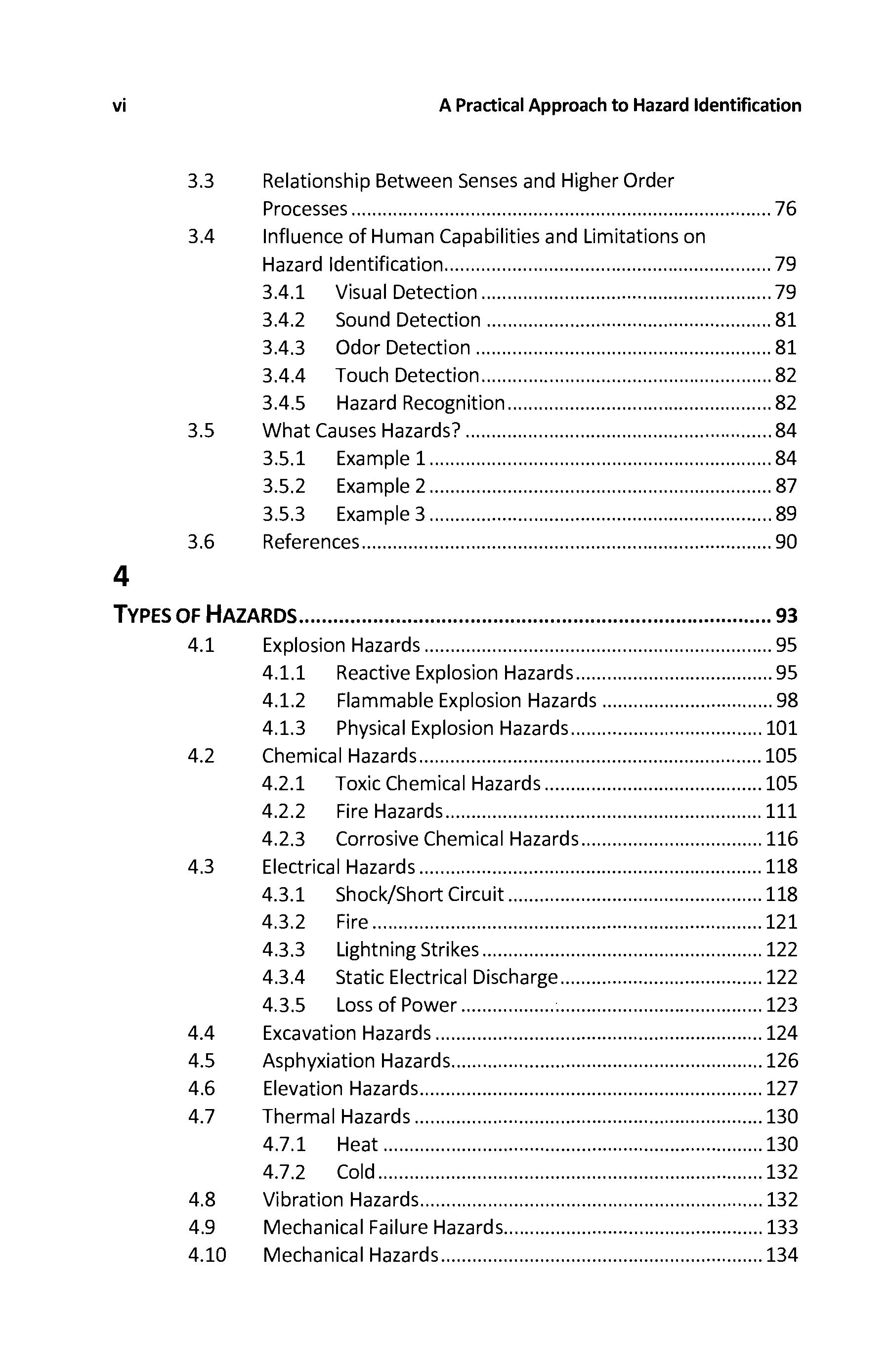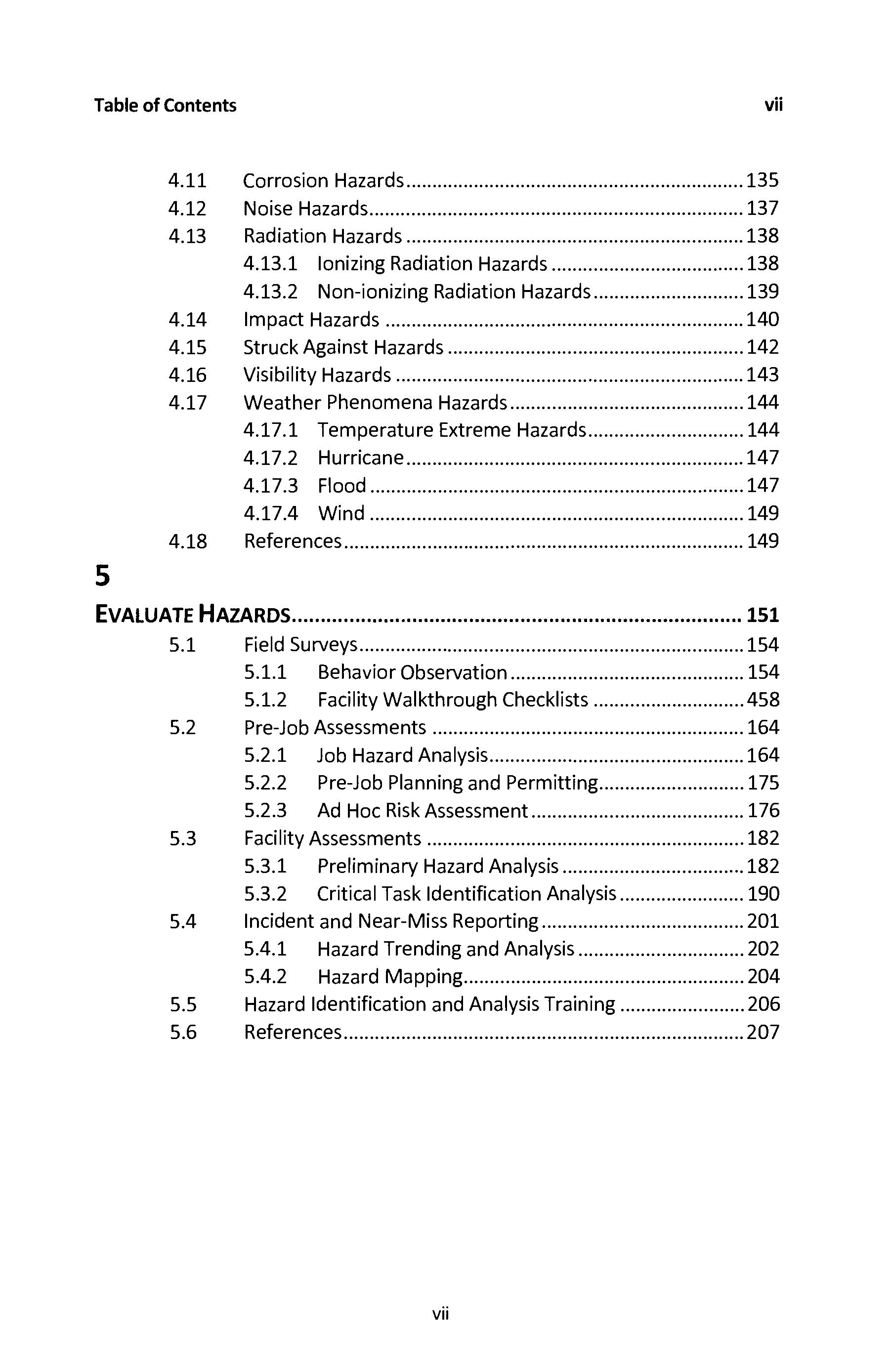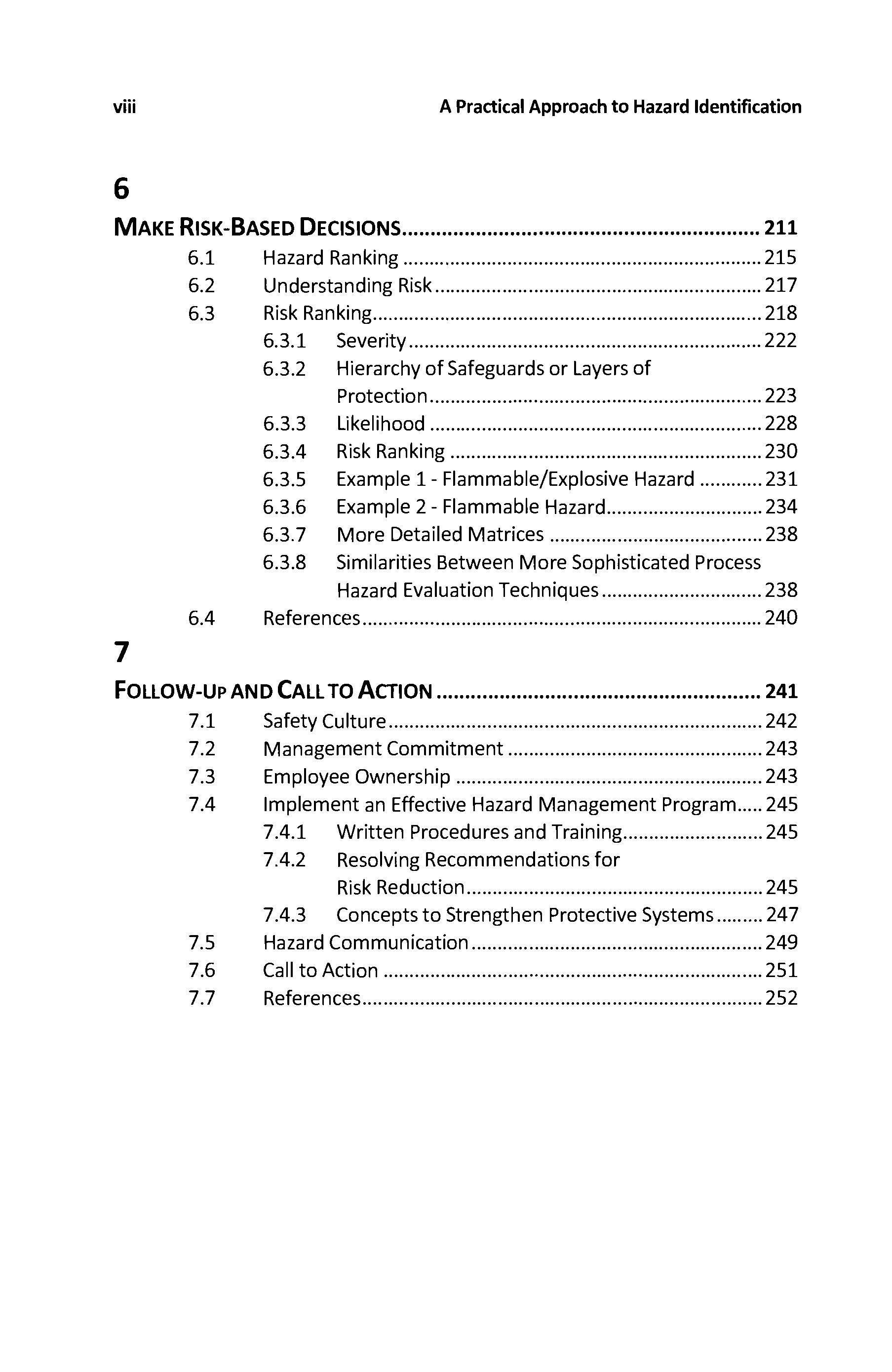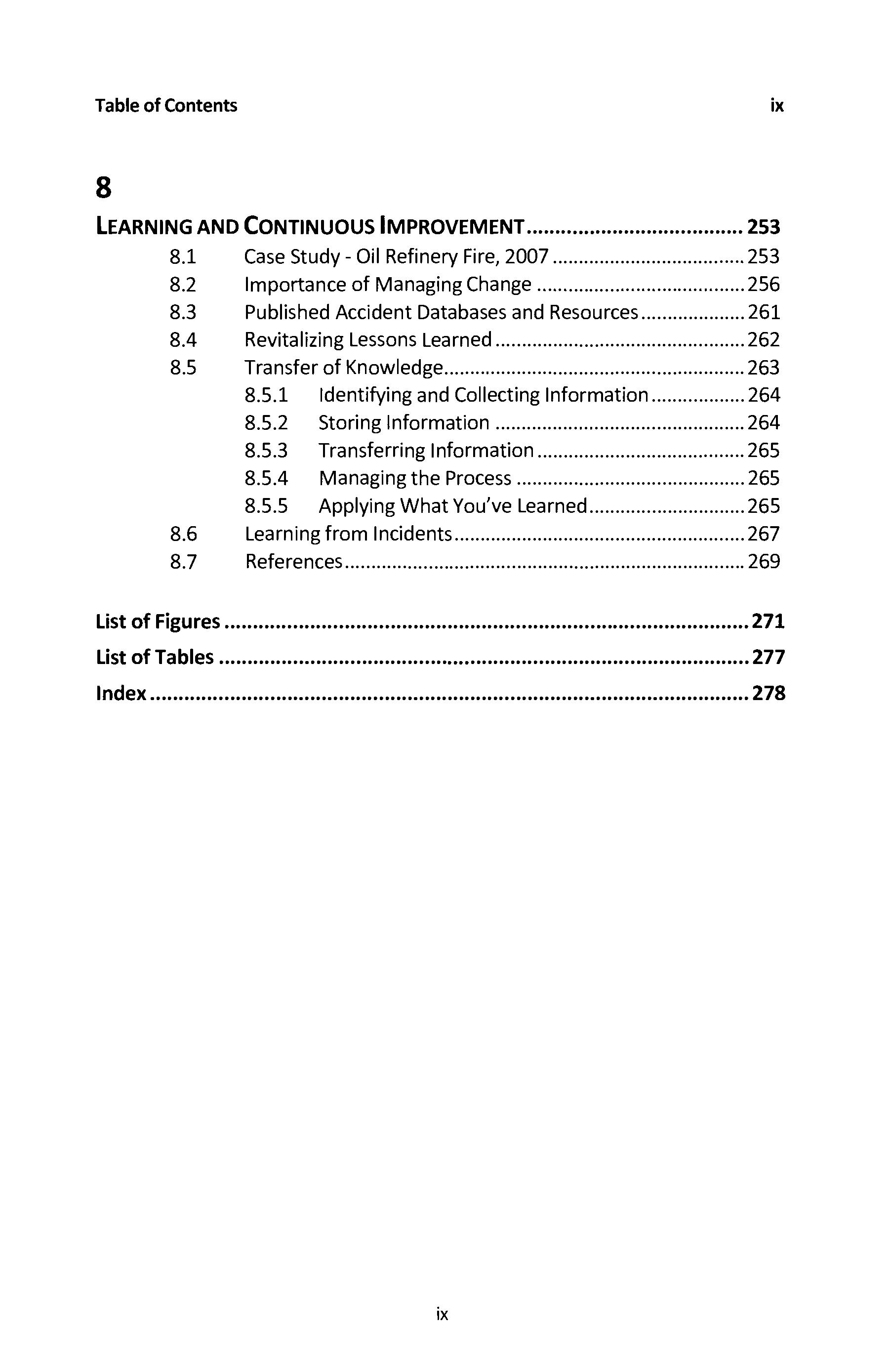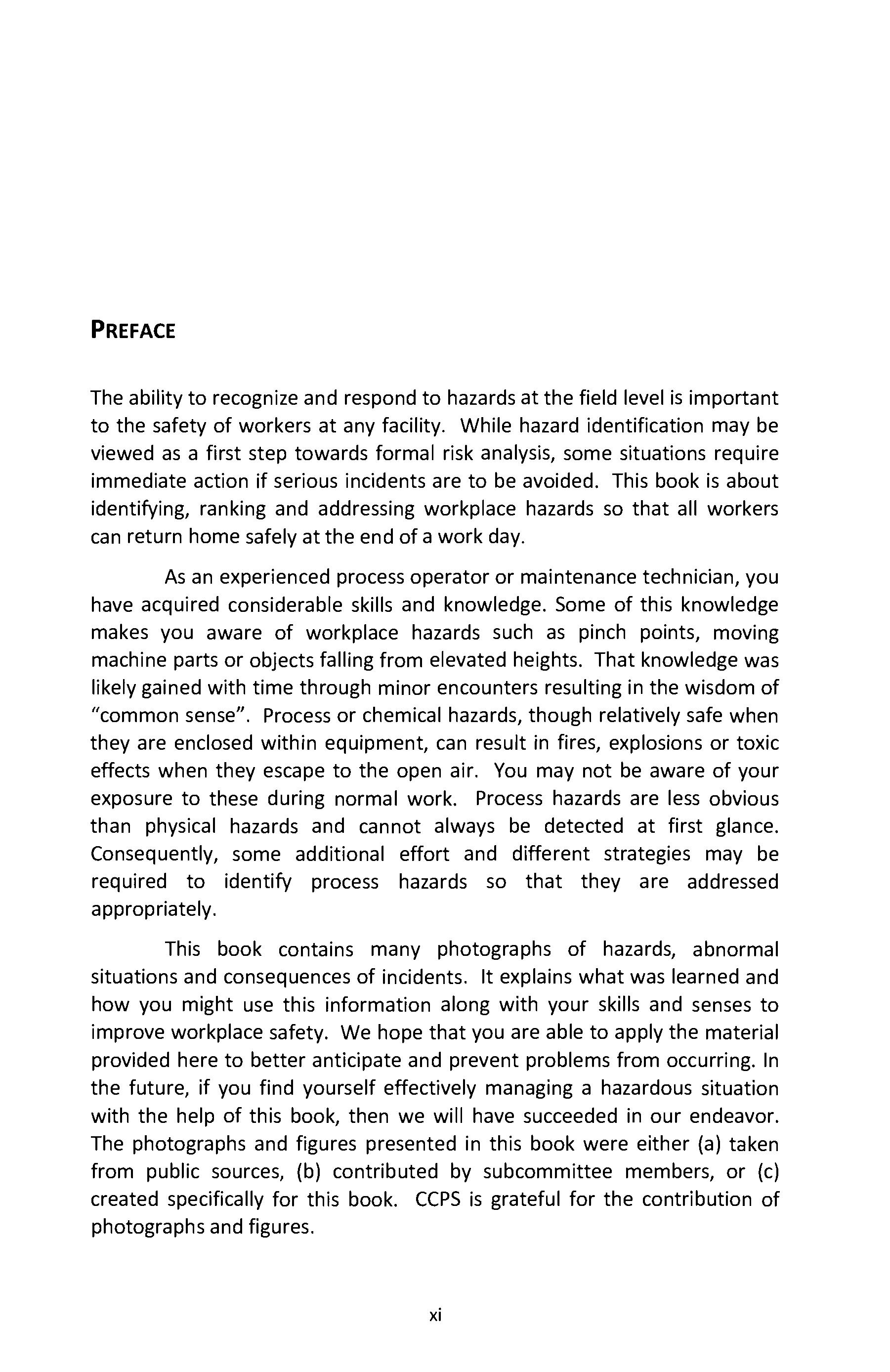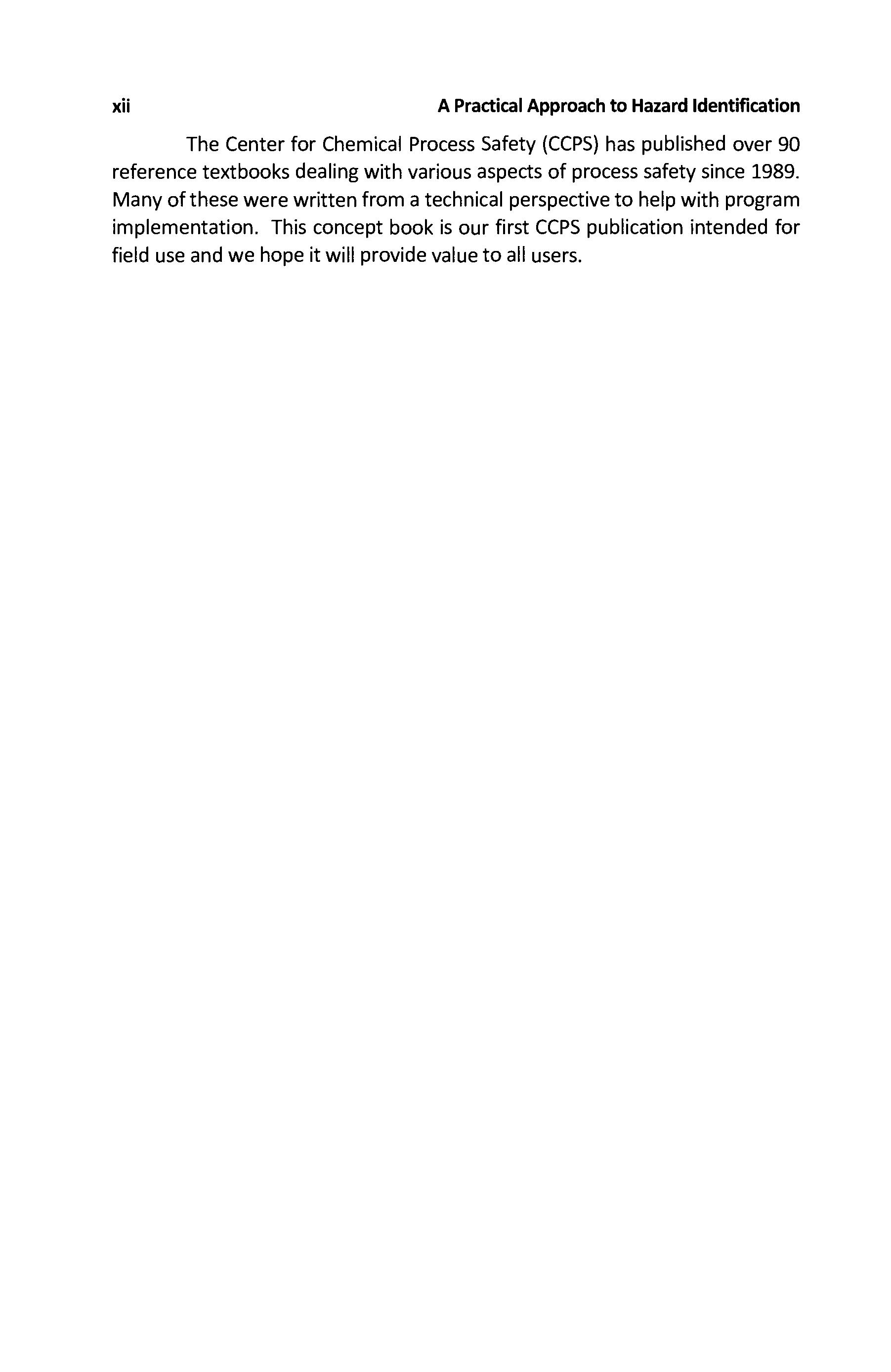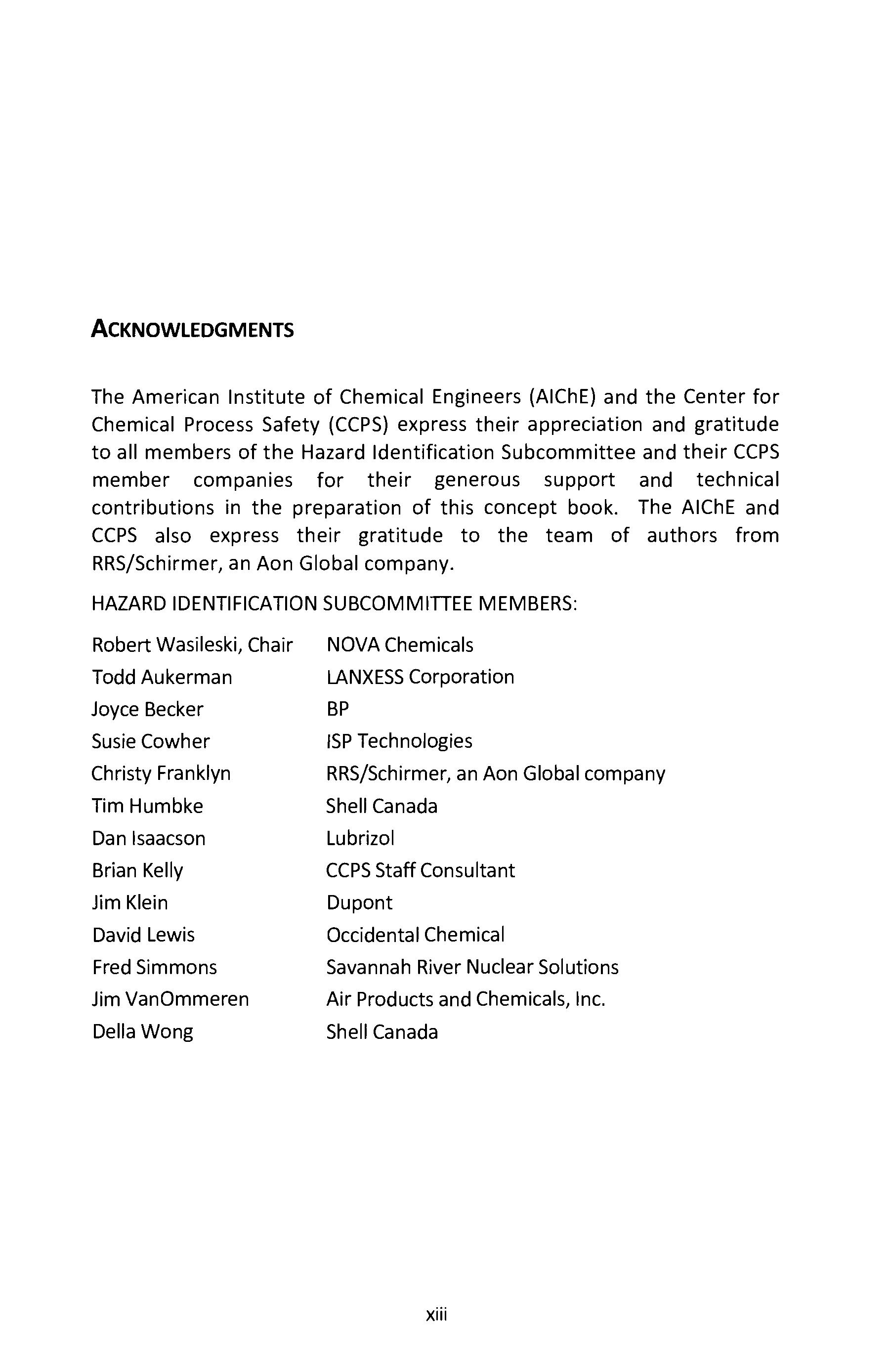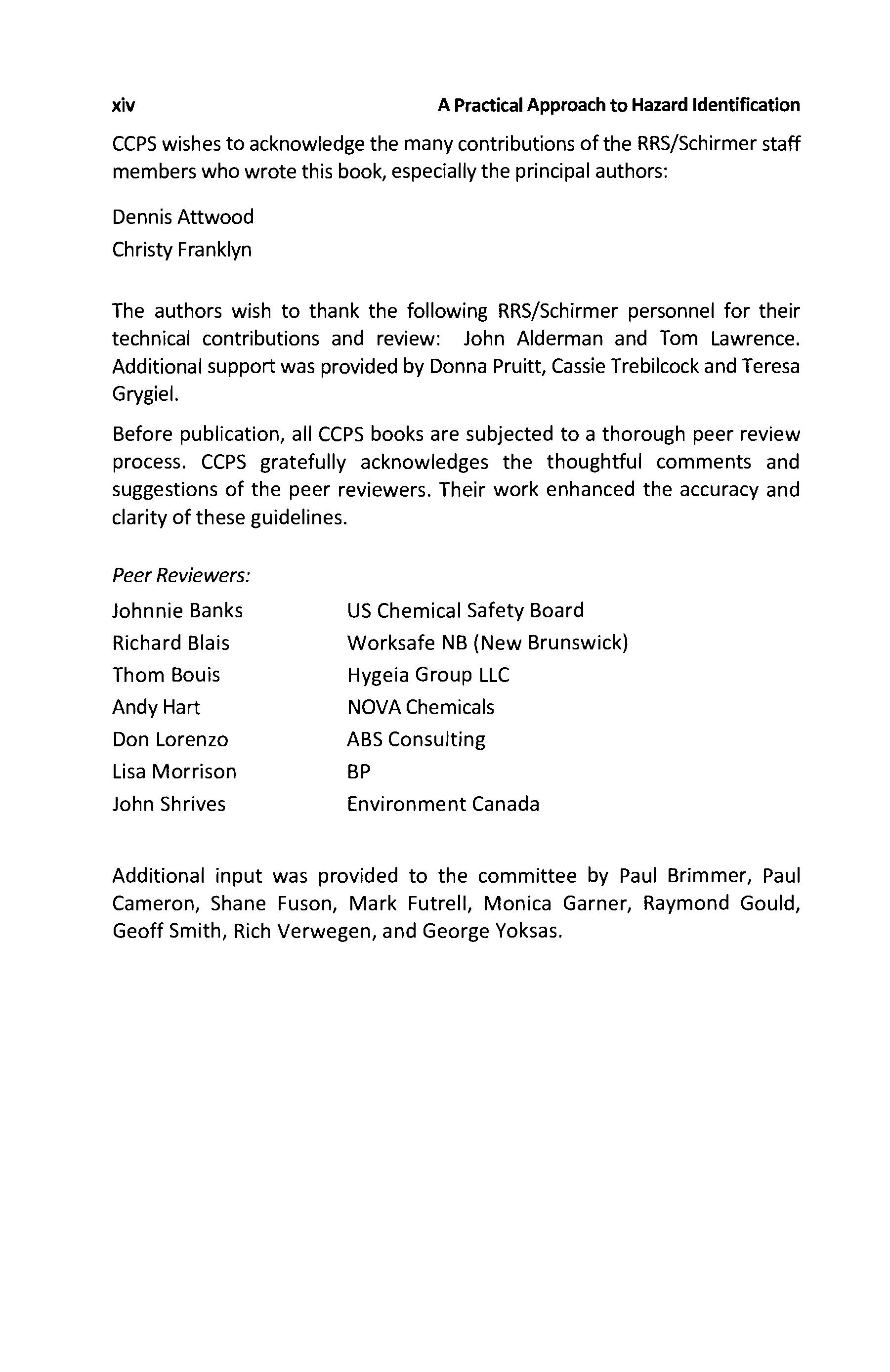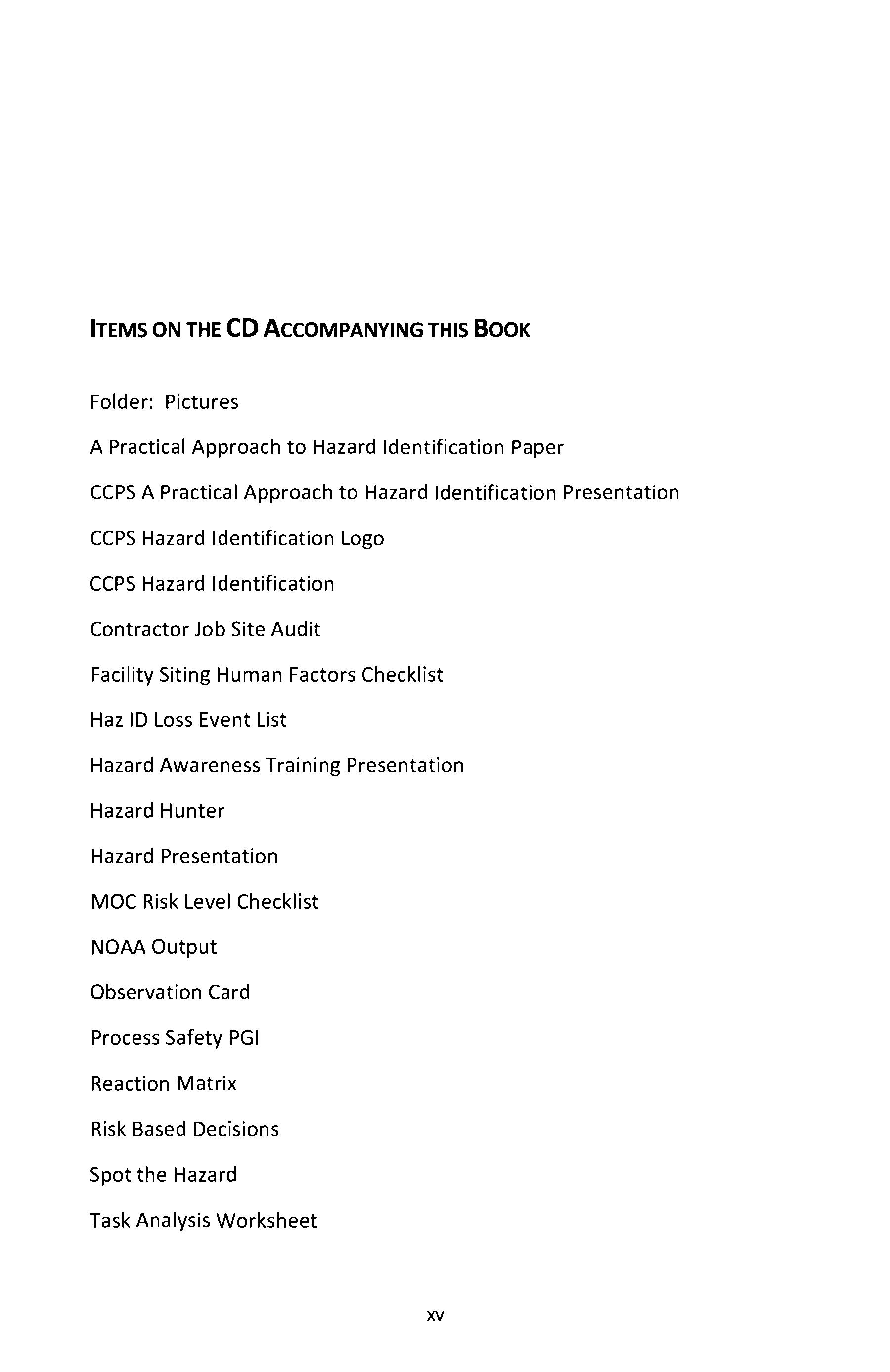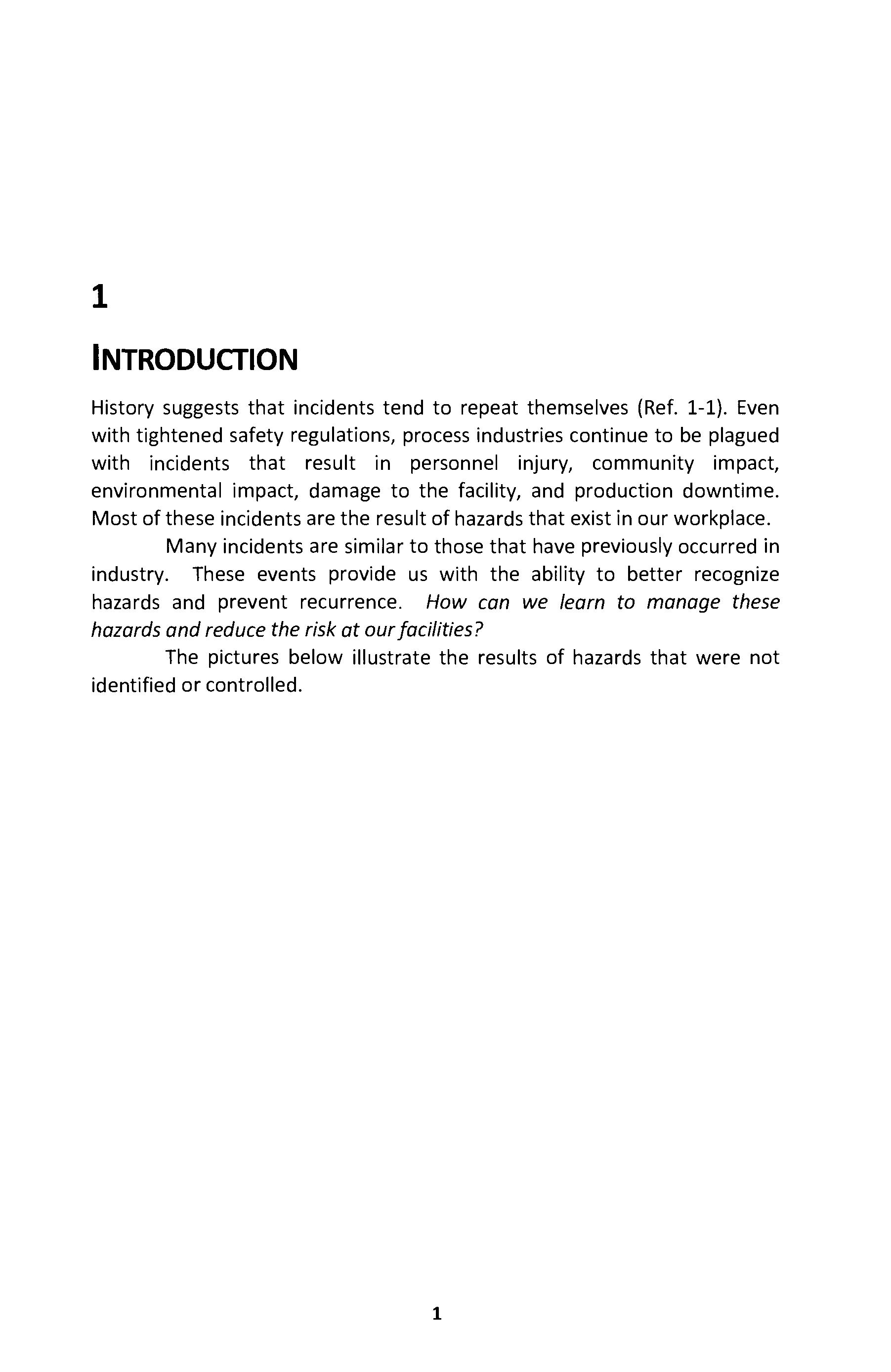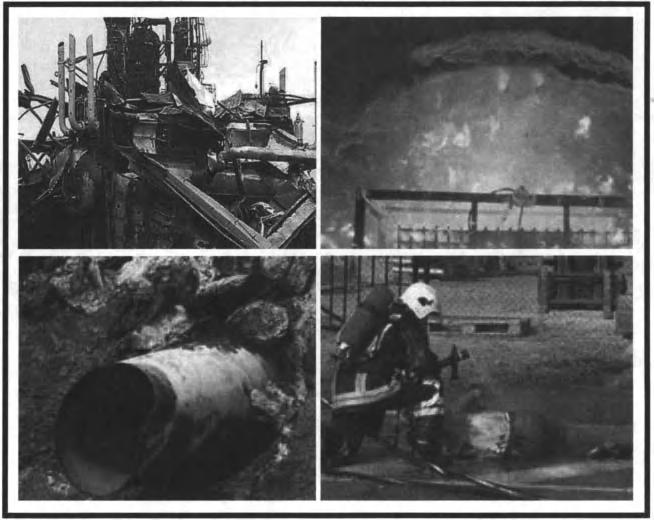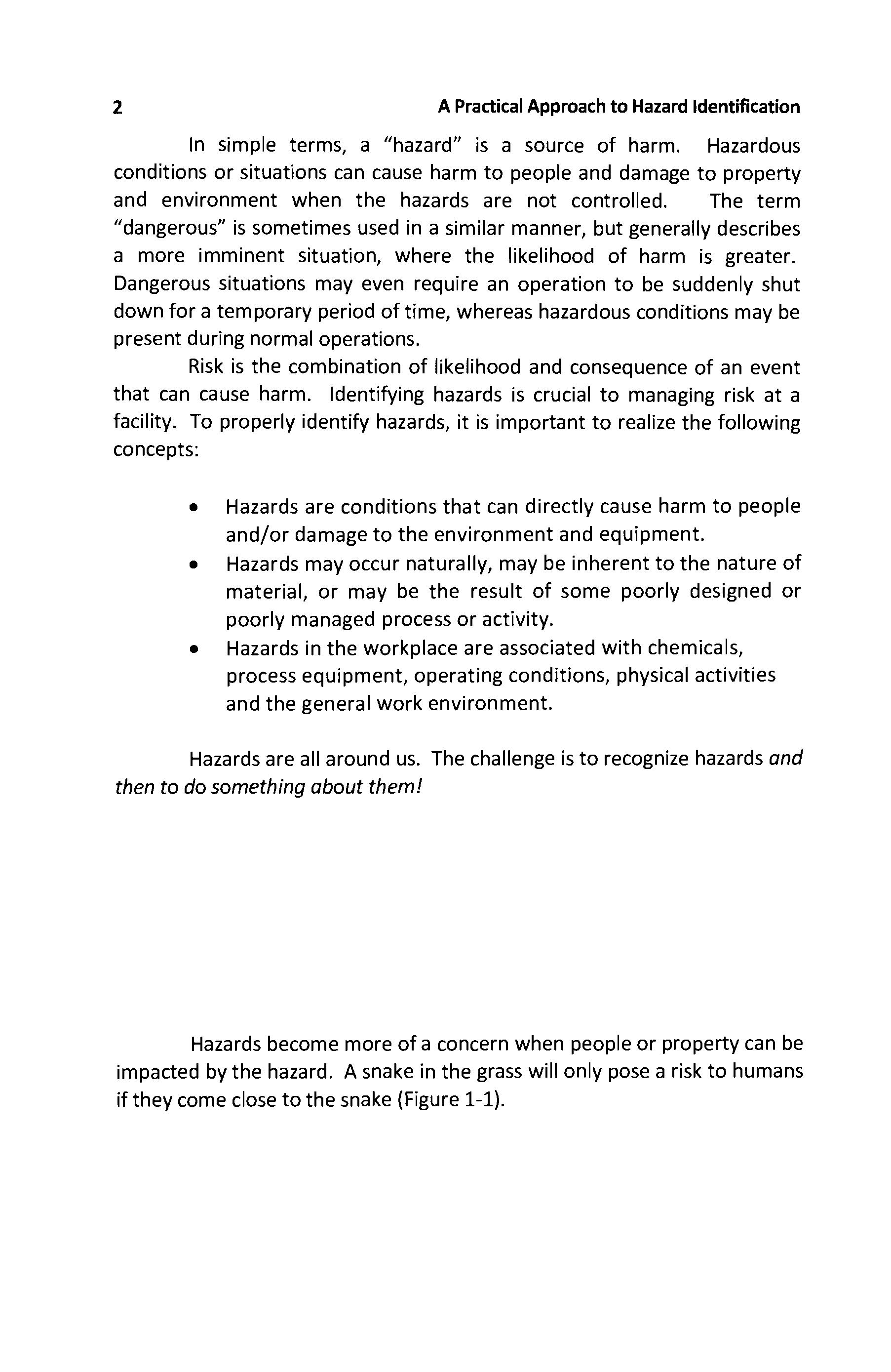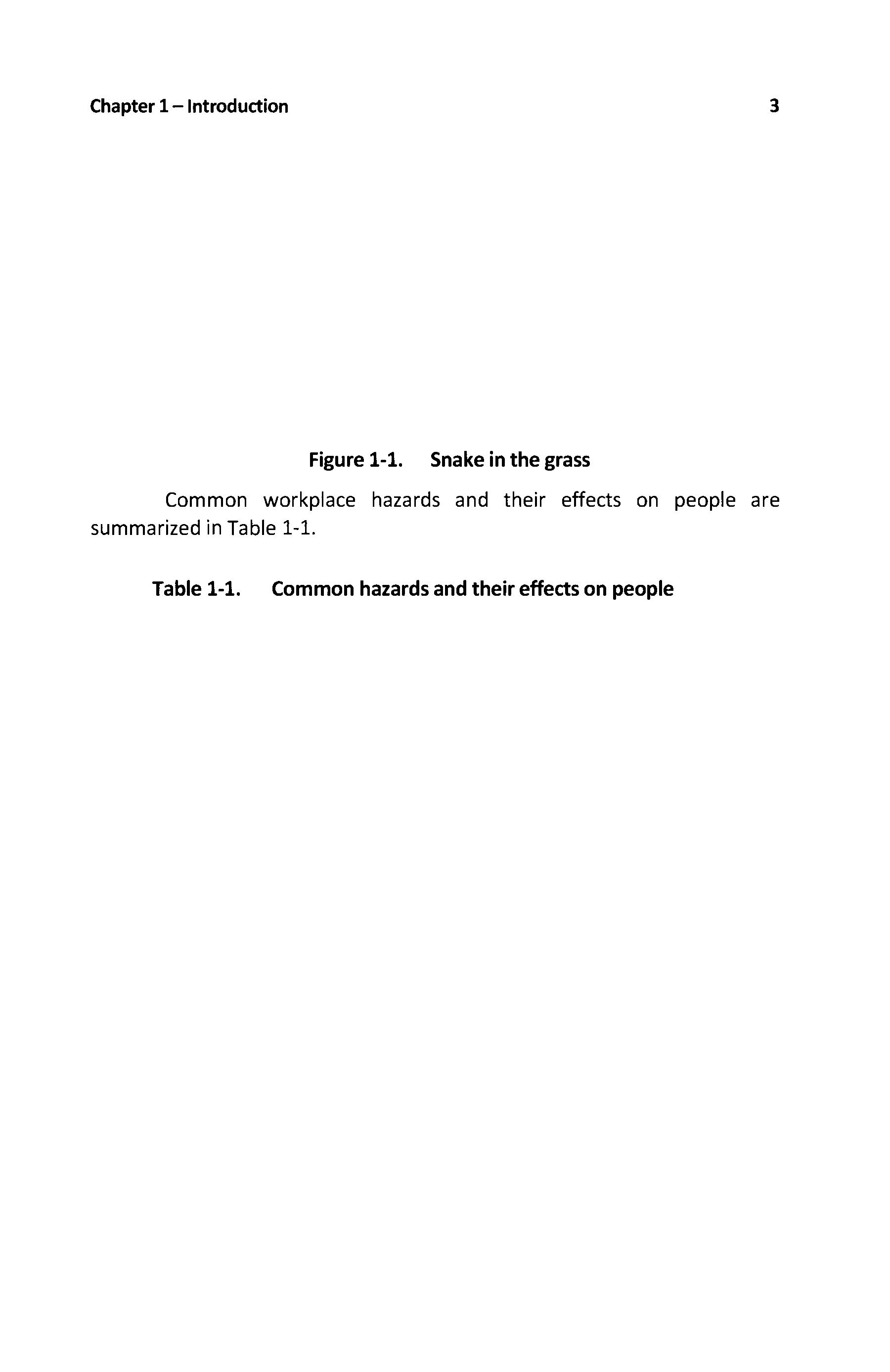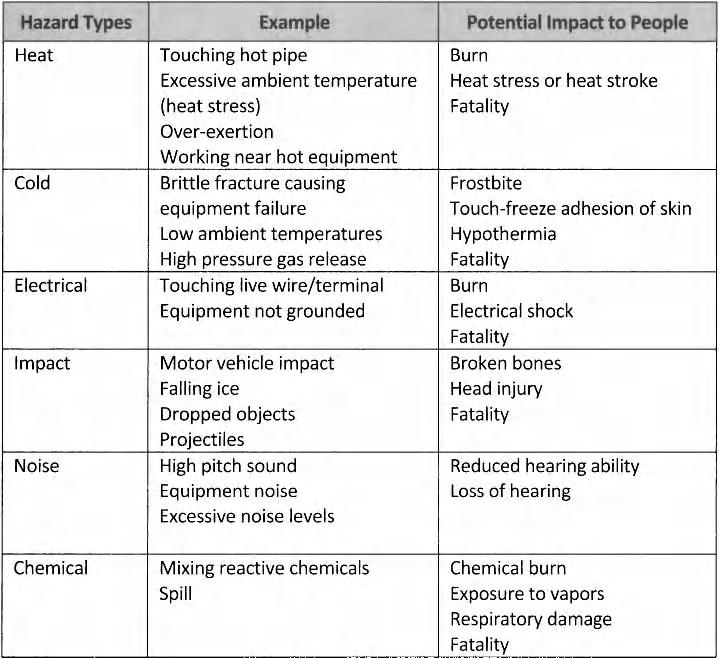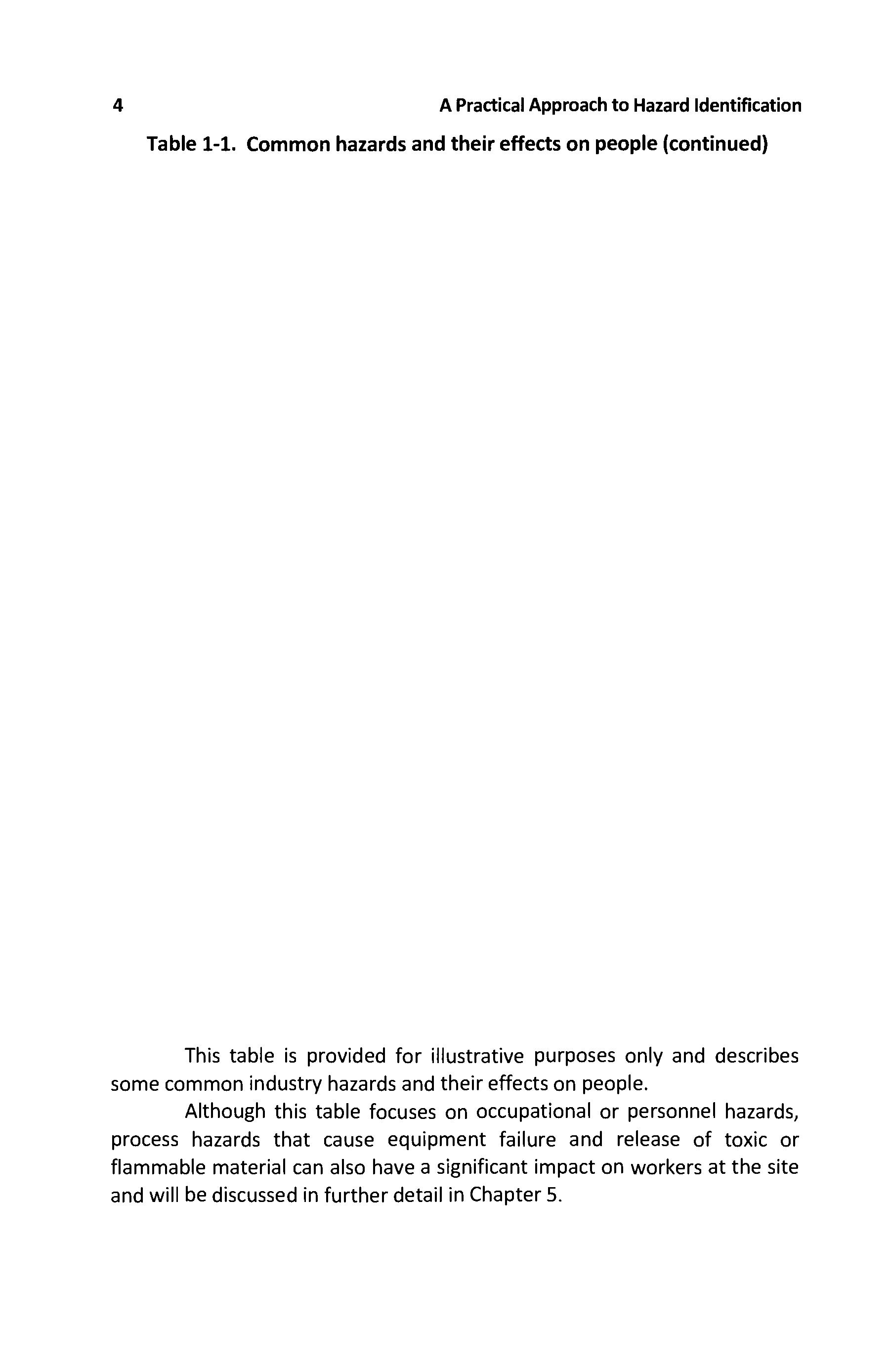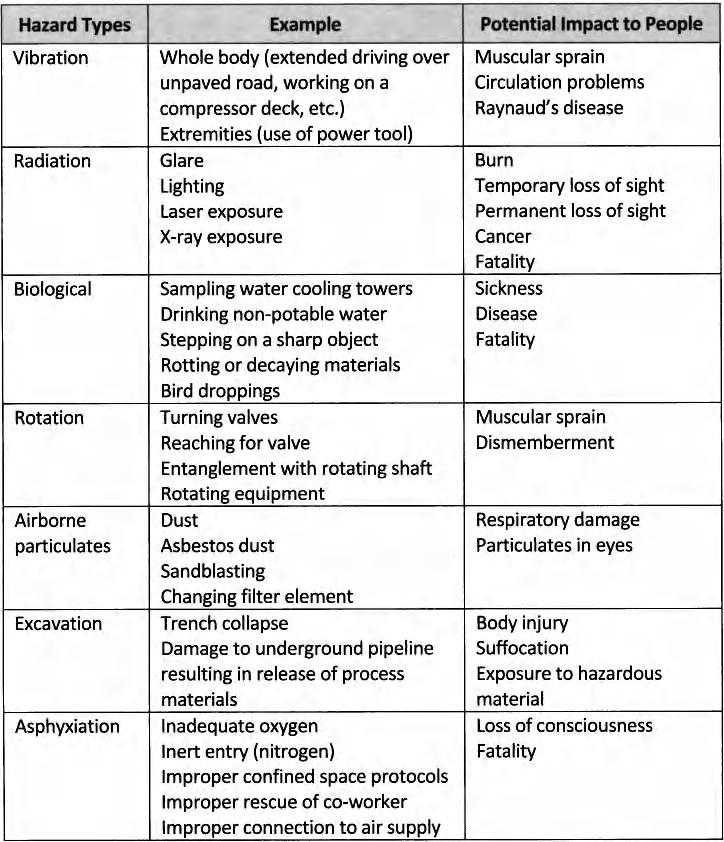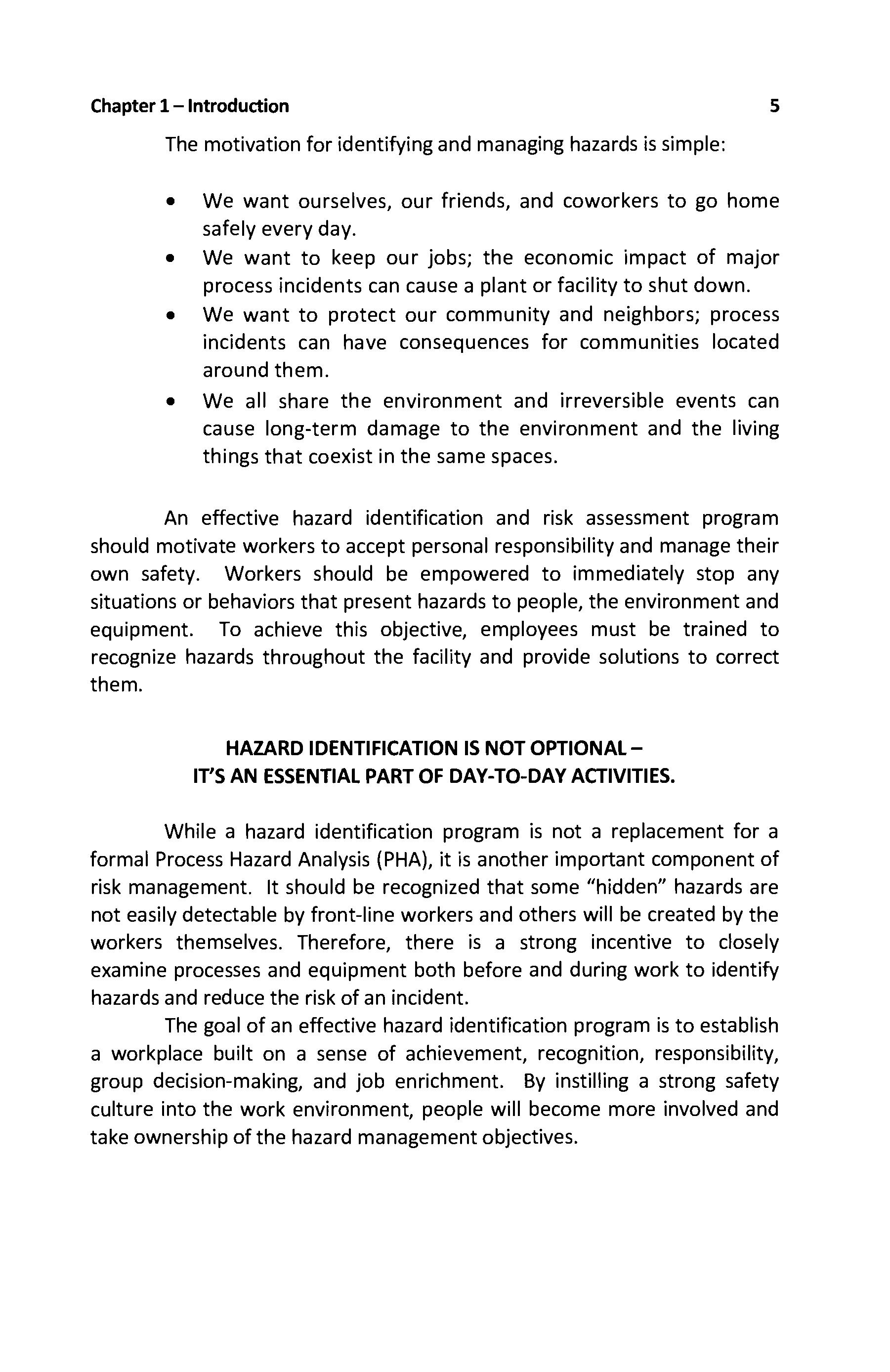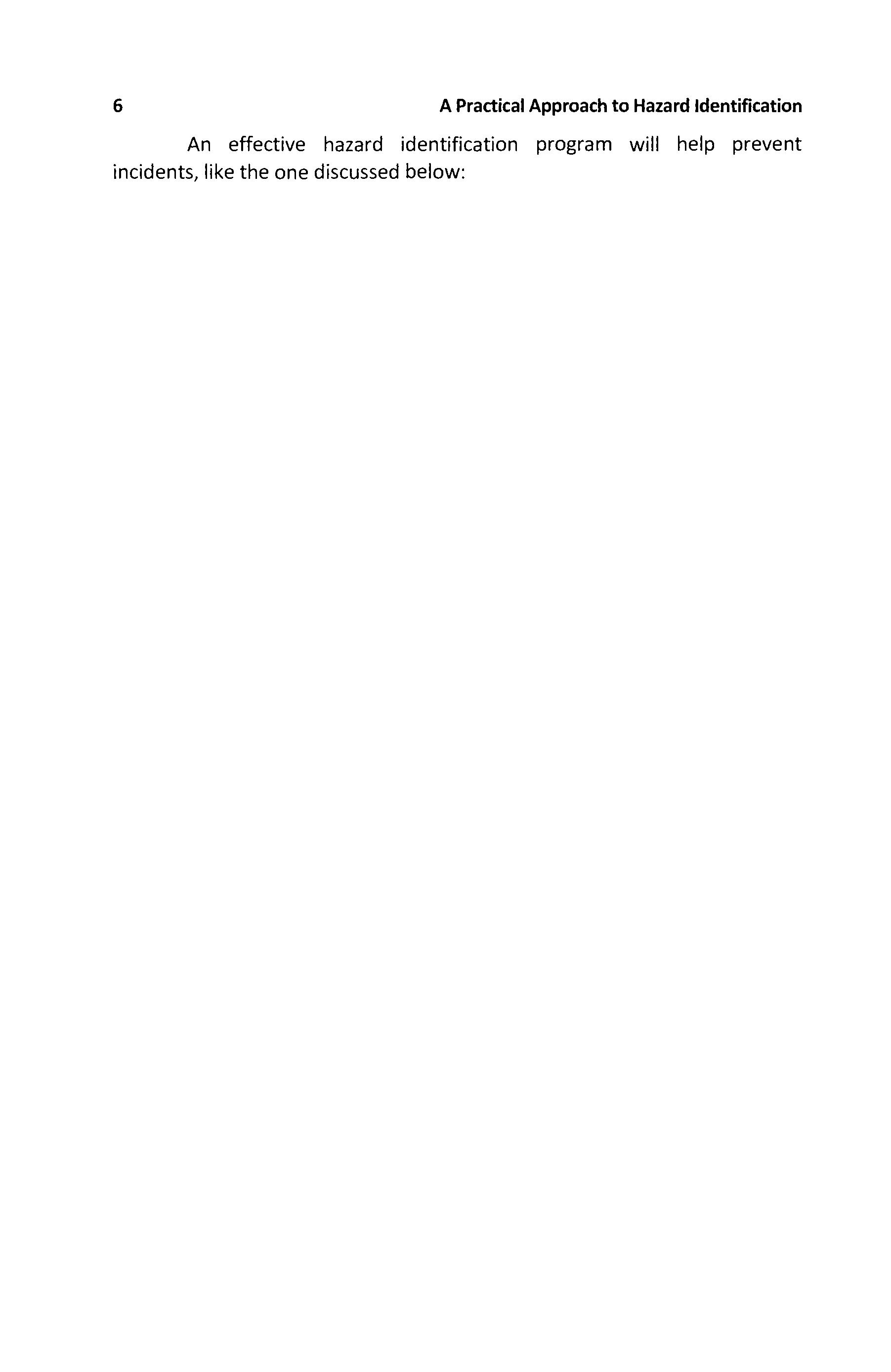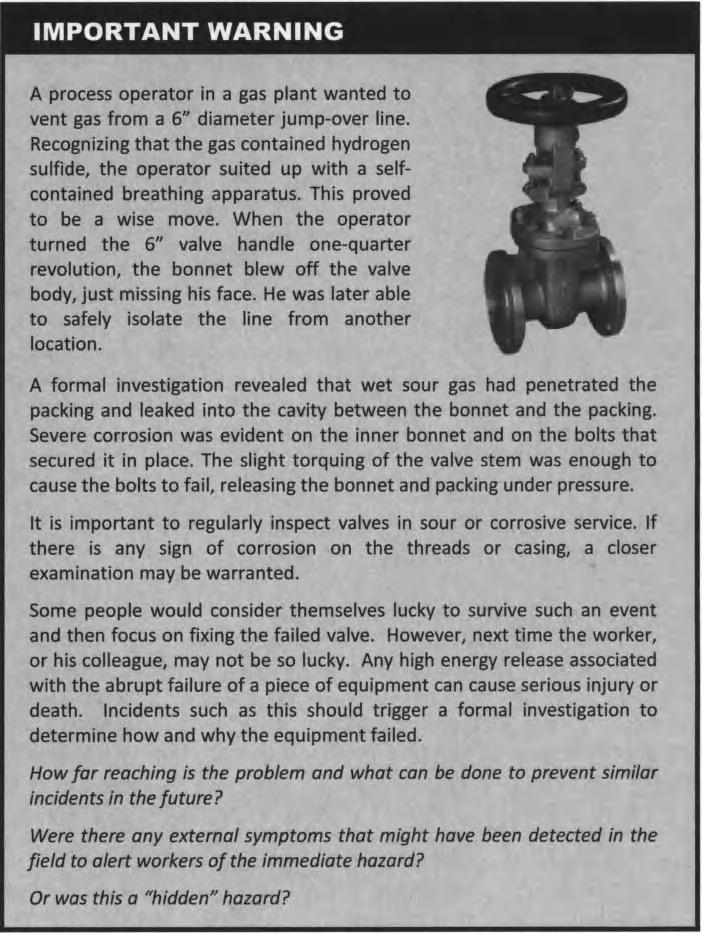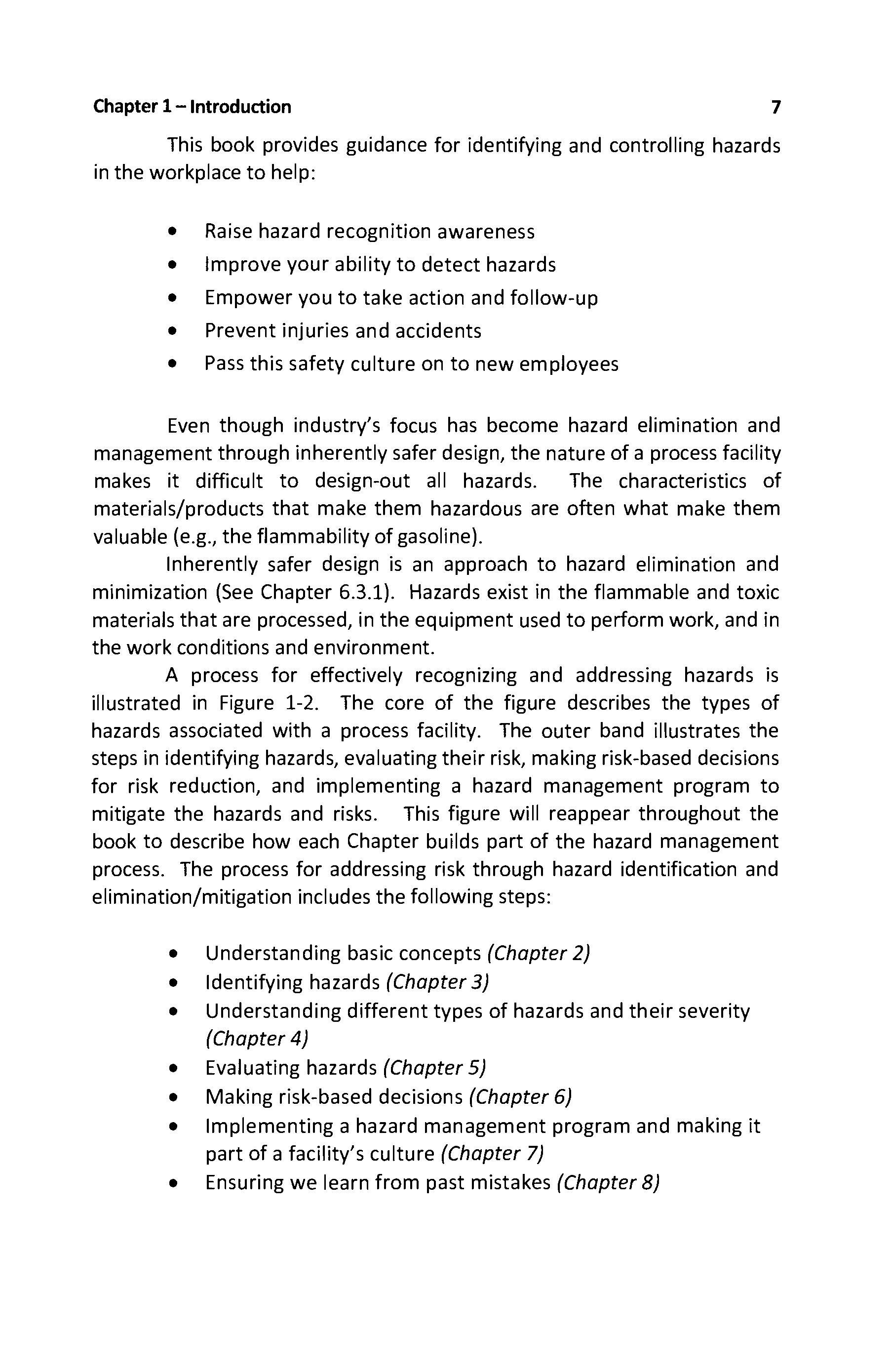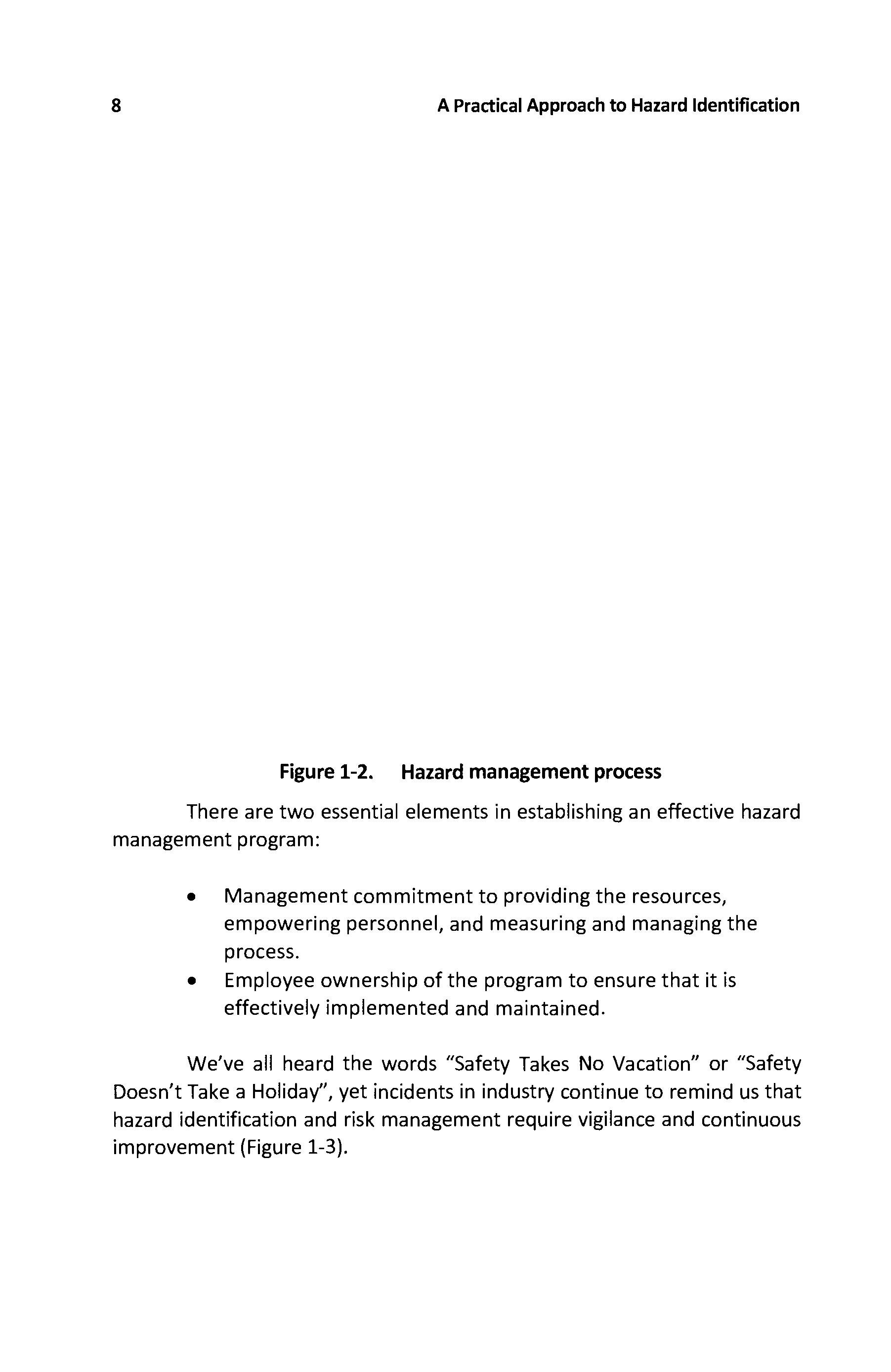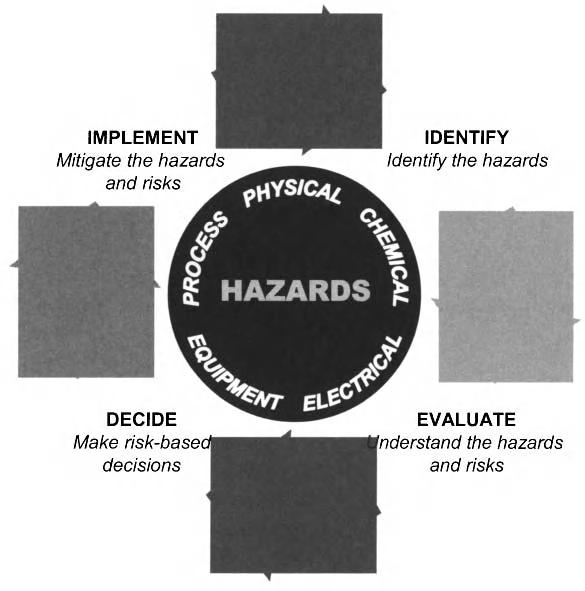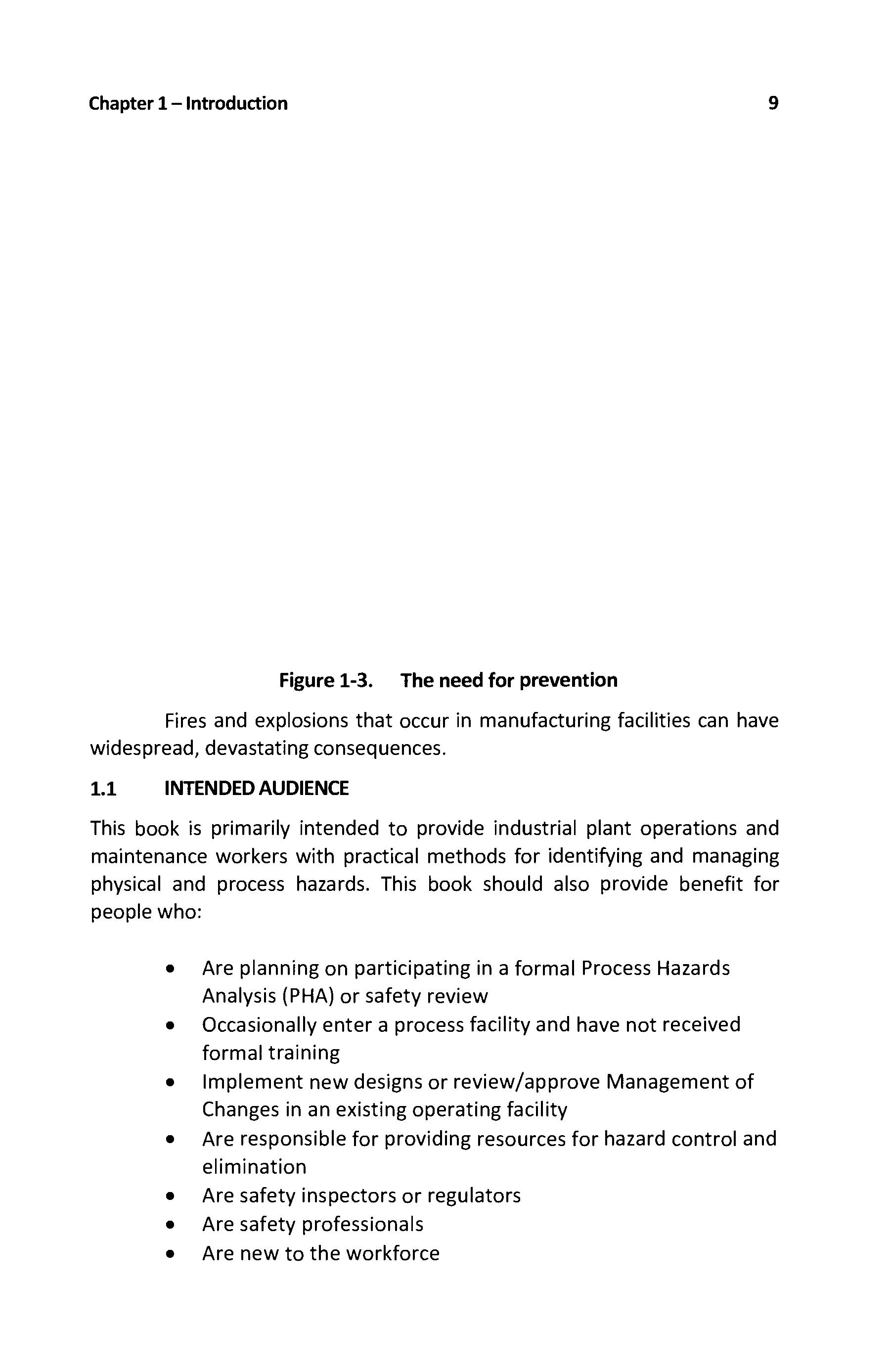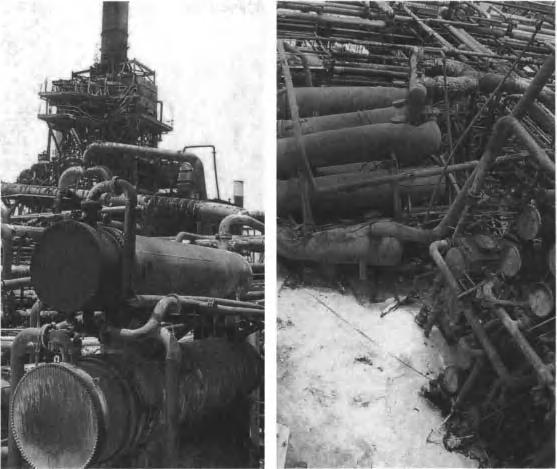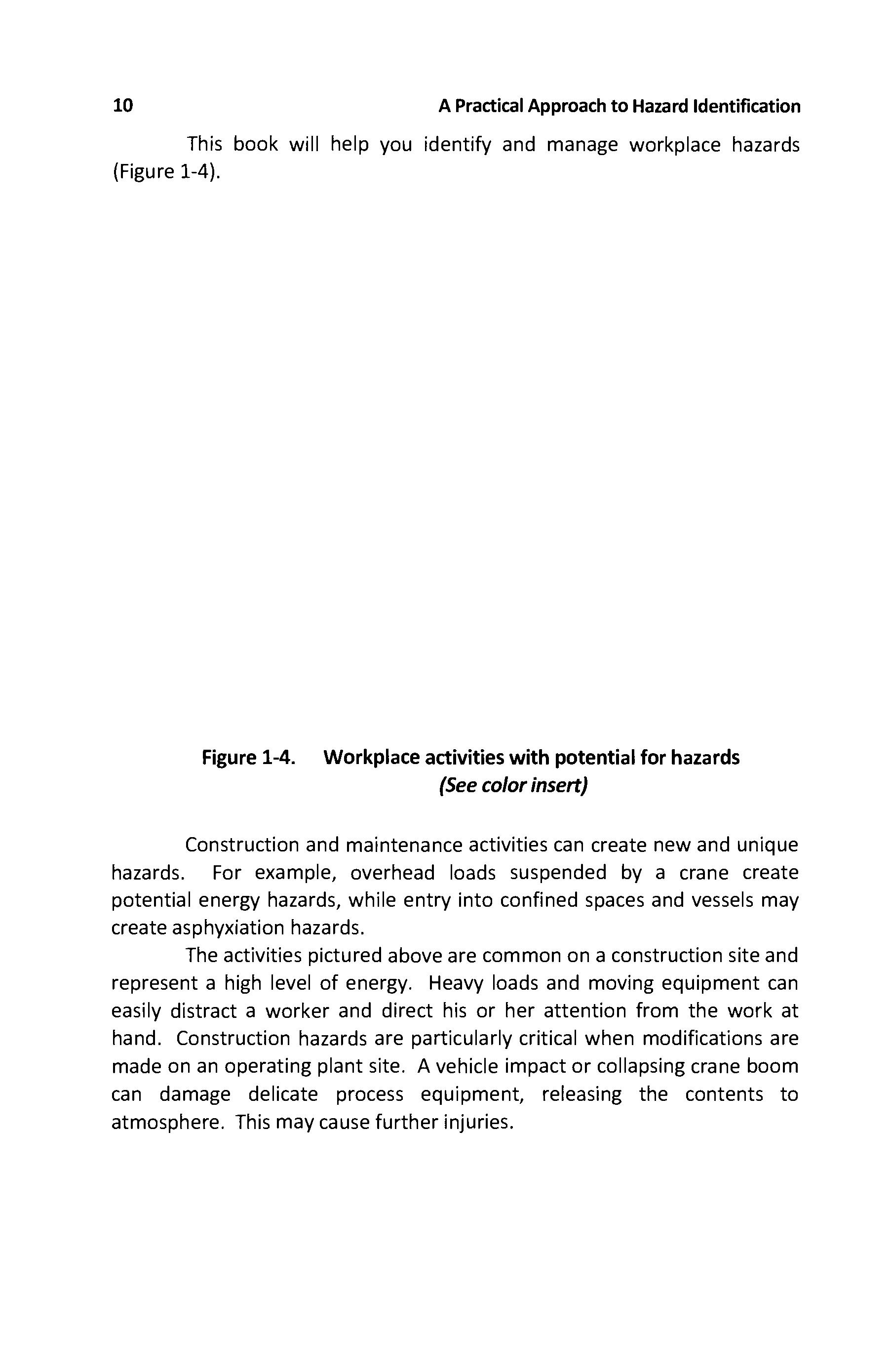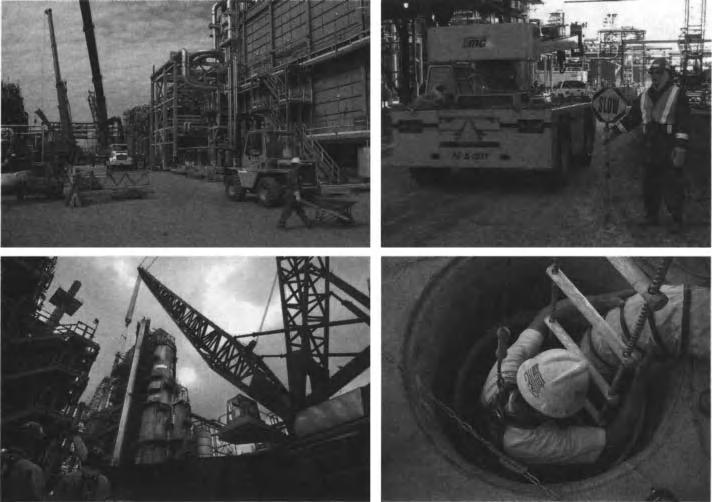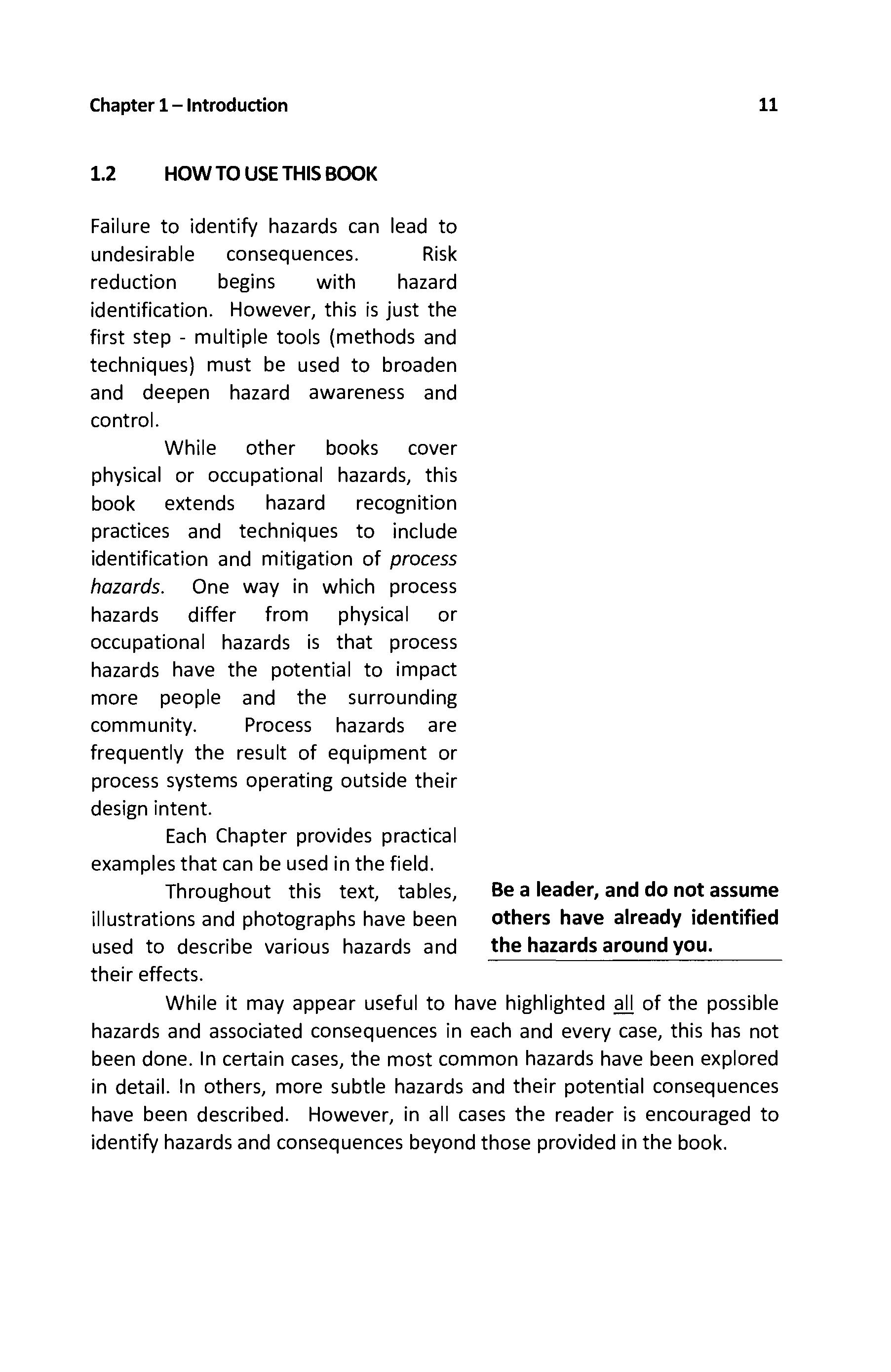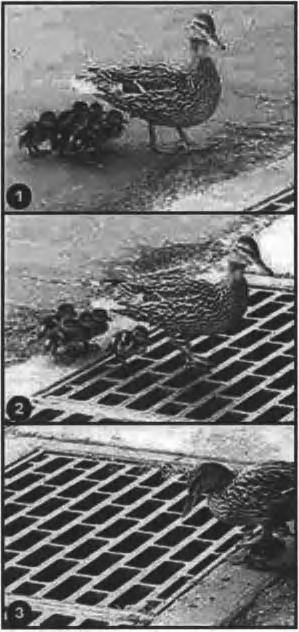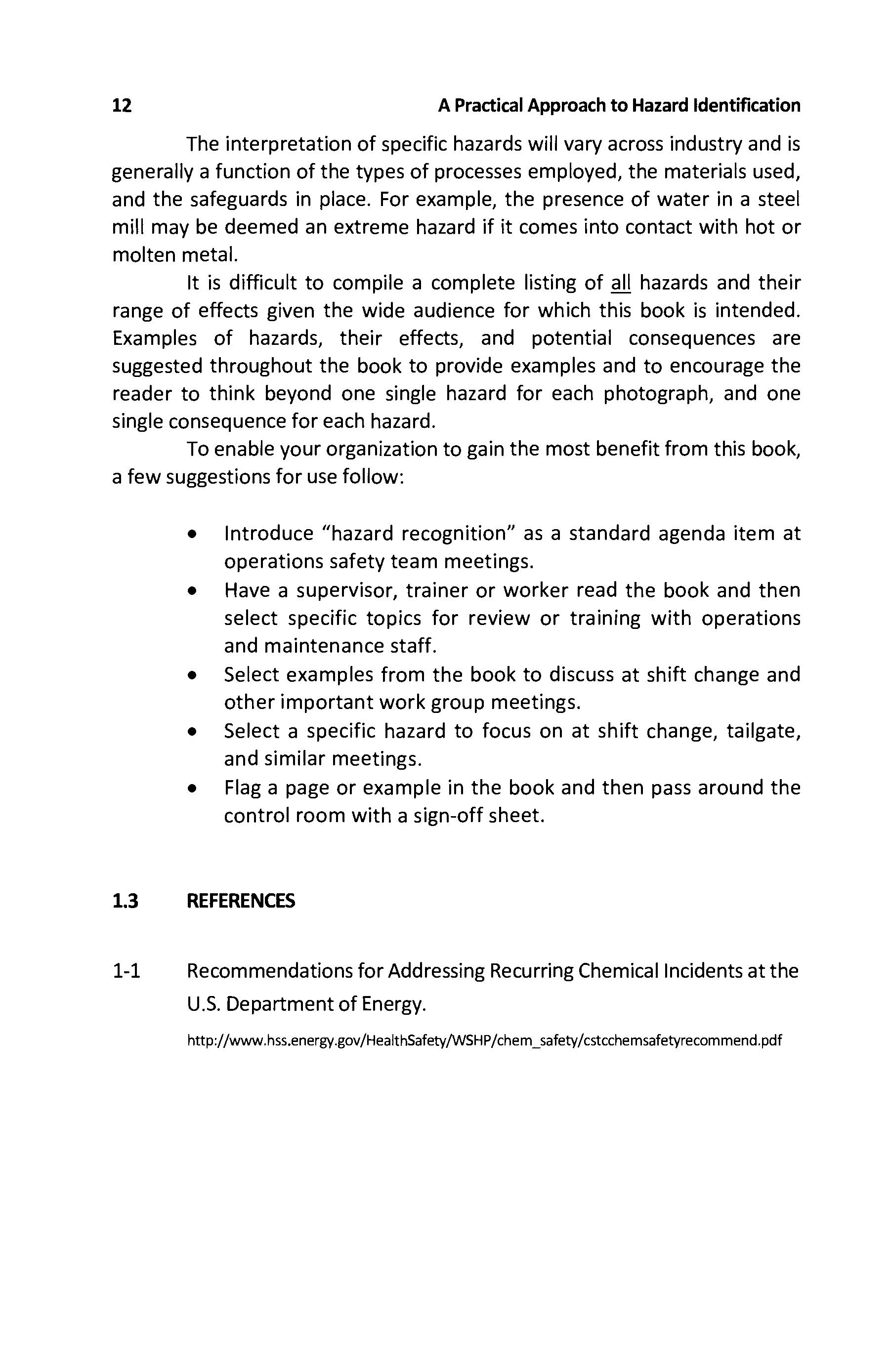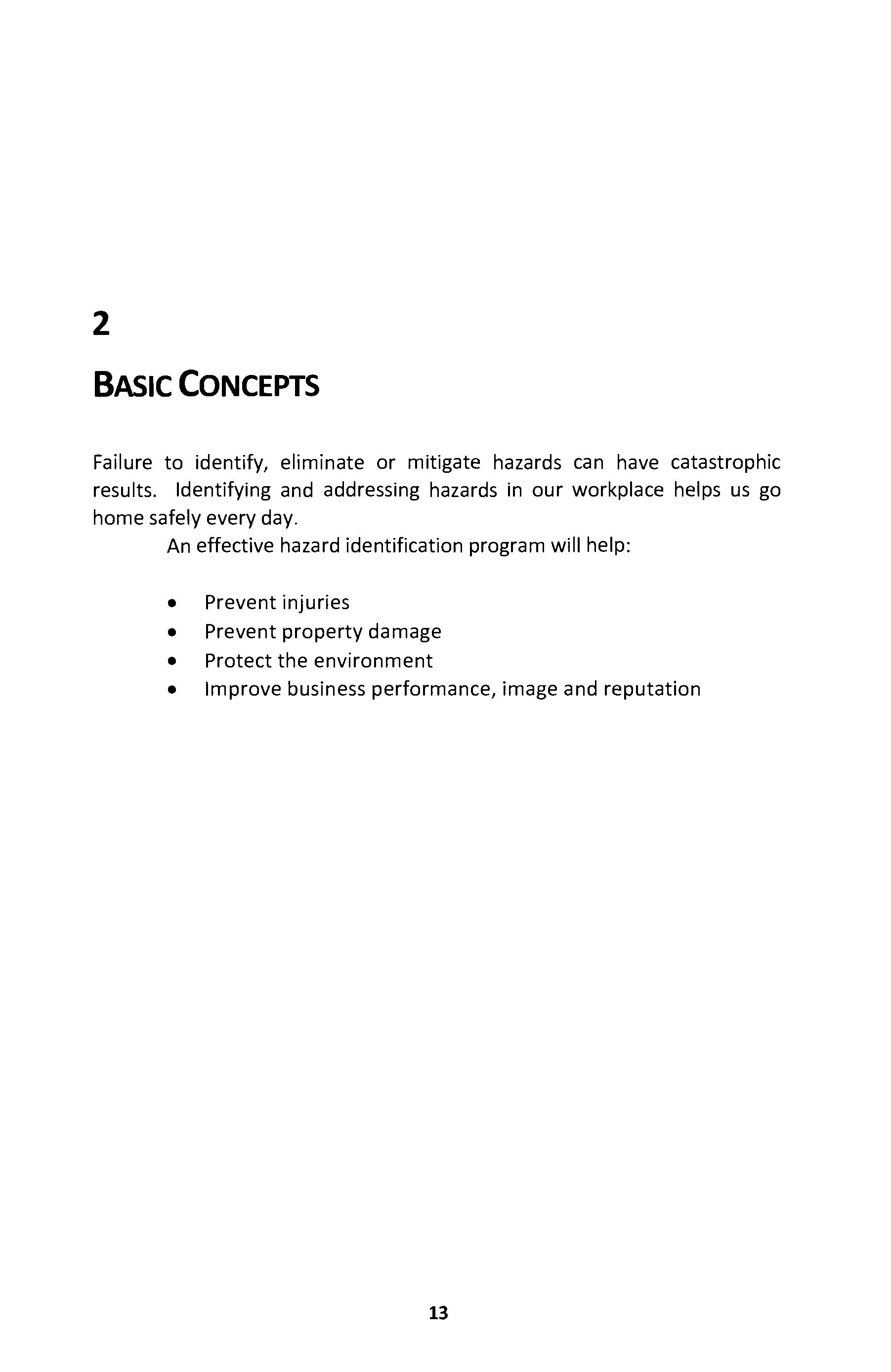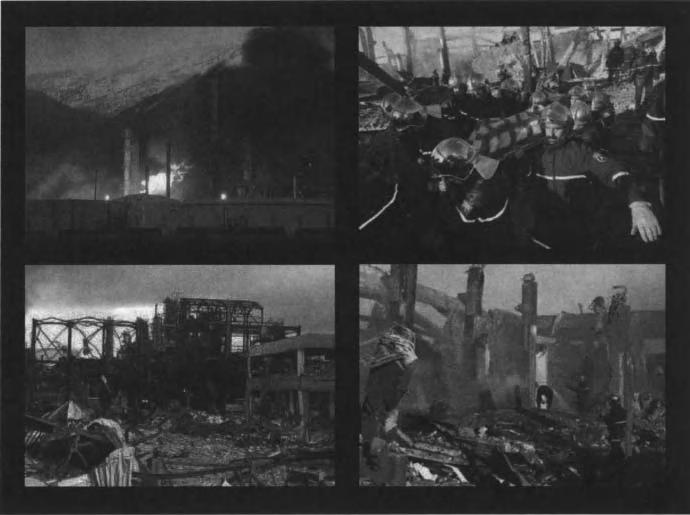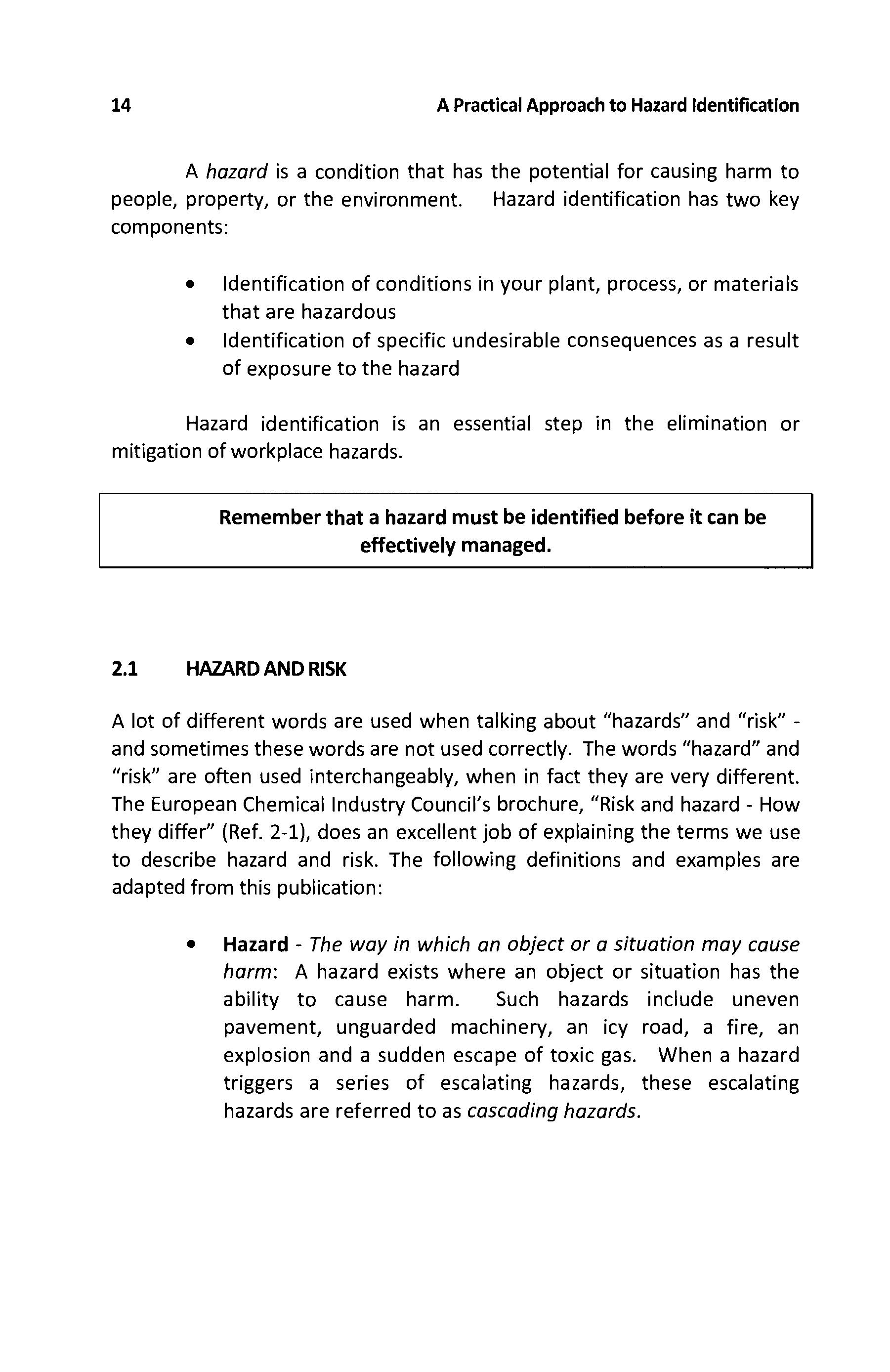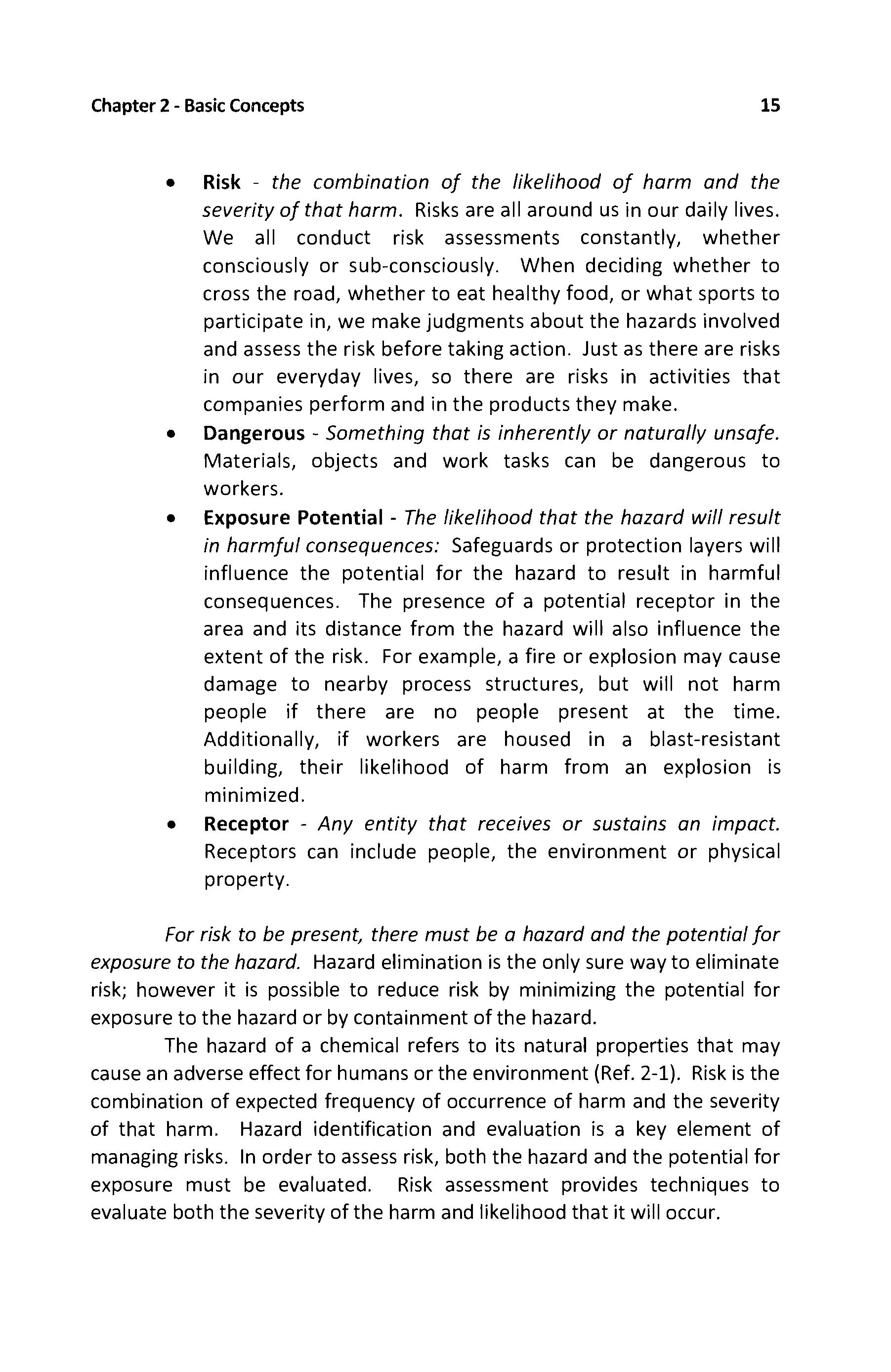A PRACTICAL APPROACH TO HAZARD INDENTIFICATION
For Operations and Maintenance Workers
Center for Chemical Process Safety
New York, New York
Copyright © 2010 by American Institute of Chemical Engineers, Inc. All rights reserved.
A Joint Publication of the Center for Chemical Process Safety of the American Institute of Chemical Engineers and John Wiley & Sons, Inc.
Published by John Wiley & Sons, Inc., Hoboken, New Jersey. Published simultaneously in Canada.
No part of this publication may be reproduced, stored in a retrieval system, or transmitted in any form or by any means, electronic, mechanical, photocopying, recording, scanning, or otherwise, except as permitted under Section 107 or 108 of the 1976 United States Copyright Act, without either the prior written permission of the Publisher, or authorization through payment of the appropriate per-copy fee to the Copyright Clearance Center, Inc., 222 Rosewood Drive, Danvers, MA 01923, (978) 750-8400, fax (978) 750-4470, or on the web at www.copyright.com Requests to the Publisher for permission should be addressed to the Permissions Department, John Wiley & Sons, Inc., 111 River Street, Hoboken, NJ 07030, (201) 748-6011, fax (201) 748-6008, or online at http://www.wiley.com/go/permission
Limit of Liability/Disclaimer of Warranty: While the publisher and author have used their best efforts in preparing this book, they make no representations or warranties with respect to the accuracy or completeness of the contents of this book and specifically disclaim any implied warranties of merchantability or fitness for a particular purpose. No warranty may be created or extended by sales representatives or written sales materials The advice and strategies contained herein may not be suitable for your situation You should consult with a professional where appropriate Neither the publisher nor author shall be liable for any loss of profit or any other commercial damages, including but not limited to special, incidental, consequential, or other damages
For general information on our other products and services or for technical support, please contact our Customer Care Department within the United States at (800) 762-2974, outside the United States at (317) 572-3993 or fax (317) 572-4002
Wiley also publishes its books in a variety of electronic formats. Some content that appears in print may not be available in electronic format For information about Wiley products, visit our web site at www.wiley.com
Library of Congress Cataloging-in-Publication Data:
A practical approach to hazard identification for operations and maintenance workers p cm
Includes index
ISBN 978-0-470-63524-7 (cloth/cd)
1 Hazardous substances—United States—Safety measures 2 Chemical industry—Safety measures I American Institute of Chemical Engineers Center for Chemical Process Safety T55.3.H3P73 2010 660'.2804—dc22
Printed in the United States of America.
10 98765432 1
2010004246
PREFACE
The ability to recognize and respond to hazards at the field level is important to the safety of workers at any facility While hazard identification may be viewed as a first step towards formal risk analysis, some situations require immediate action if serious incidents are to be avoided. This book is about identifying, ranking and addressing workplace hazards so that all workers can return home safely at the end of a work day.
As an experienced process operator or maintenance technician, you have acquired considerable skills and knowledge. Some of this knowledge makes you aware of workplace hazards such as pinch points, moving machine parts or objects falling from elevated heights That knowledge was likely gained with time through minor encounters resulting in the wisdom of "common sense". Process or chemical hazards, though relatively safe when they are enclosed within equipment, can result in fires, explosions or toxic effects when they escape to the open air. You may not be aware of your exposure to these during normal work Process hazards are less obvious than physical hazards and cannot always be detected at first glance Consequently, some additional effort and different strategies may be required to identify process hazards so that they are addressed appropriately.
This book contains many photographs of hazards, abnormal situations and consequences of incidents It explains what was learned and how you might use this information along with your skills and senses to improve workplace safety. We hope that you are able to apply the material provided here to better anticipate and prevent problems from occurring. In the future, if you find yourself effectively managing a hazardous situation with the help of this book, then we will have succeeded in our endeavor The photographs and figures presented in this book were either (a) taken from public sources, (b) contributed by subcommittee members, or (c) created specifically for this book. CCPS is grateful for the contribution of photographs and figures
2
A Practical Approach to Hazard Identification
In simple terms, a "hazard" is a source of harm Hazardous conditions or situations can cause harm to people and damage to property and environment when the hazards are not controlled. The term "dangerous" is sometimes used in a similar manner, but generally describes a more imminent situation, where the likelihood of harm is greater. Dangerous situations may even require an operation to be suddenly shut down for a temporary period of time, whereas hazardous conditions may be present during normal operations
Risk is the combination of likelihood and consequence of an event that can cause harm Identifying hazards is crucial to managing risk at a facility To properly identify hazards, it is important to realize the following concepts:
• Hazards are conditions that can directly cause harm to people and/or damage to the environment and equipment
• Hazards may occur naturally, may be inherent to the nature of material, or may be the result of some poorly designed or poorly managed process or activity
• Hazards in the workplace are associated with chemicals, process equipment, operating conditions, physical activities and the general work environment
Hazards are all around us. The challenge is to recognize hazards and then to do something about them!
Hazards become more of a concern when people or property can be impacted by the hazard A snake in the grass will only pose a risk to humans if they come close to the snake (Figure 1-1).
Chapter 1 - Introduction 3
Common workplace hazards and thei r effects on people are summarized in Table 1-1
Table 1-1. Common hazards and their effects on people
Hazard Types
Heat Cold
Impact Noise
Chemical
Example
Touching hot pipe
Excessive ambient temperature
(heat stress)
Over-exertion
Working near hot equipment
Brittle fracture causing
equipment failure
Low ambient temperatures
High pressure gas release
Touching live wire/termina l
Equipment not grounded
Moto r vehicle impact
Falling ice
Dropped objects
Projectiles
High pitch sound
Equipment noise
Excessive noise levels
Mixing reactive chemicals
Spill
Potential Impact to People
Burn
Heat stress or heat stroke
Fatality
Frostbite
Touch-freeze adhesion of skin
Hypothermia
Fatality
Burn
Electrical shock
Fatality
Broken bones
Head injury
Fatality
Reduced hearing ability
Loss of hearing
Chemical burn
Exposure t o vapors
Respiratory damage
Fatality
Figure 1-1. Snake in the grass
A Practical Approach to Hazard Identification
Table 1-1. Common hazards and their effects on people (continued)
Hazard Types
Vibration
Radiation
Biological
Rotation
TAirbome particulates
Excavation
Asphyxiation
Example
Whole body (extended driving over unpaved road, workin g on a compressor deck, etc.)
Extremities (use o f power tool )
Glare
Lighting
Laser exposure
X-ray exposure
Sampling wate r cooling tower s
Drinking non-potable wate r
Stepping on a sharp object
Rotting or decaying materials
Bird droppings
Turning valves
Reaching fo r valve
Entanglement wit h rotatin g shaft
Rotating equipment
Dust
Asbestos dust
Sandblasting
Changing filte r element
Trench collapse
Damage t o underground pipeline resulting in release of process materials
Inadequate oxygen
Inert entr y (nitrogen)
Improper confined space protocols
Improper rescue of co-worker
Improper connection t o air supply
Potential Impact to People
Muscular sprain
Circulation problems
Raynaud's disease
Burn
Temporary loss o f sight
Permanent loss of sight
Cancer
Fatality
Sickness
Disease
Fatality
Muscular sprain
Dismemberment
Respiratory damage
Particulates in eyes
Body injury
Suffocation
Exposure t o hazardous
material
Loss o f consciousness
Fatality
This table is provided for illustrative purposes only and describes some common industry hazards and their effects on people
Although this table focuses on occupational or personnel hazards, process hazards that cause equipment failure and release of toxic or flammable material can also have a significant impact on workers at the site and will be discussed in further detail in Chapter 5
Chapter 1 - Introduction 5
The motivation for identifying and managing hazards is simple:
• We want ourselves, our friends, and coworkers to go home safely every day
• We want to keep our jobs; the economic impact of major process incidents can cause a plant or facility to shut down.
• We want to protect our community and neighbors; process incidents can have consequences for communities located around them
• We all share the environment and irreversible events can cause long-term damage to the environment and the living things that coexist in the same spaces.
An effective hazard identification and risk assessment program should motivate workers to accept personal responsibility and manage their own safety Workers should be empowered to immediately stop any situations or behaviors that present hazards to people, the environment and equipment. To achieve this objective, employees must be trained to recognize hazards throughout the facility and provide solutions to correct them.
HAZARD IDENTIFICATION IS NOT OPTIONAL-
ITS AN ESSENTIAL PART OF
DAY-TO-DAY ACTIVITIES.
While a hazard identification program is not a replacement for a formal Process Hazard Analysis (PHA), it is another important component of risk management It should be recognized that some "hidden" hazards are not easily detectable by front-line workers and others will be created by the workers themselves Therefore, there is a strong incentive to closely examine processes and equipment both before and during work to identify hazards and reduce the risk of an incident.
The goal of an effective hazard identification program is to establish a workplace built on a sense of achievement, recognition, responsibility, group decision-making, and job enrichment. By instilling a strong safety culture into the work environment, people will become more involved and take ownership of the hazard management objectives
A Practical Approach to Hazard Identification
An effective hazard identification program will help prevent incidents, like the one discussed below:
IMPORTAN T WARNIN G
A process operato r in a gas plant wante d t o ven t gas fro m a 6 " diamete r jump-ove r line. Recognizing tha t th e gas containe d hydrogen sulfide, th e operato r suited up wit h a selfcontaine d breathin g apparatus. This proved t o be a wise move Whe n th e operato r turne d th e 6 " valve handle one-quarte r revolution , th e bonne t blew of f th e valve body, jus t missing his face He was later able t o safely isolate th e line fro m anothe r location
A forma l investigation revealed tha t we t sour gas had penetrate d th e packing and leaked int o th e cavity betwee n th e bonnet and th e packing
Severe corrosion was eviden t on th e inner bonnet and on th e bolts tha t secured i t in place The slight torquin g of th e valve stem was enough t o cause th e bolts t o fail , releasing th e bonne t and packing under pressure
It is importan t t o regularly inspect valves in sour or corrosive service If ther e is any sign o f corrosion on th e threads or casing, a closer examinatio n may be warranted .
Some people woul d consider themselves lucky t o survive such an event and the n focus on fixin g th e faile d valve However, next tim e th e worker , or his colleague, may no t be so lucky Any high energy release associated wit h th e abrup t failur e o f a piece of equipmen t can cause serious injur y o r death Incidents such as thi s should trigger a forma l investigation t o determin e how and wh y th e equipmen t failed
How far reaching is the problem and what can be done to prevent similar incidents in the future?
Were there any external symptoms that might have been detected in the field to alert workers of the immediate hazard?
Or was this a "hidden" hazard?
Chapter 1 - Introduction 7
This book provides guidance for identifying and controlling hazards in the workplace to help:
• Raise hazard recognition awareness
• Improve your ability to detect hazards
• Empower you to take action and follow-up
• Prevent injuries and accidents
• Pass this safety culture on to new employees
Even though industry's focus has become hazard elimination and management through inherently safer design, the nature of a process facility makes it difficult to design-out all hazards The characteristics of materials/products that make them hazardous are often what make them valuable (e.g., the flammability of gasoline)
Inherently safer design is an approach to hazard elimination and minimization (See Chapter 6.3.1) Hazards exist in the flammable and toxic materials that are processed, in the equipment used to perform work, and in the work conditions and environment.
A process for effectively recognizing and addressing hazards is illustrated in Figure 1-2 The core of the figure describes the types of hazards associated with a process facility The outer band illustrates the steps in identifying hazards, evaluating their risk, making risk-based decisions for risk reduction, and implementing a hazard management program to mitigate the hazards and risks. This figure will reappear throughout the book to describe how each Chapter builds part of the hazard management process The process for addressing risk through hazard identification and elimination/mitigation includes the following steps:
• Understanding basic concepts (Chapter 2)
• Identifying hazards (Chapter 3)
• Understanding different types of hazards and their severity (Chapter 4)
• Evaluating hazards (Chapter 5)
• Making risk-based decisions (Chapter 6)
• Implementing a hazard management program and making it part of a facility's culture (Chapter 7)
• Ensuring we learn from past mistakes (Chapter 8)
There are two essential elements in establishing an effective hazard management program:
• Management commitment to providing the resources, empowering personnel, and measuring and managing the process.
• Employee ownership of the program to ensure that it is effectively implemented and maintained.
We've all heard the words "Safety Takes No Vacation" or "Safety Doesn't Take a Holiday", yet incidents in industry continue to remind us that hazard identification and risk management require vigilance and continuous improvement (Figure 1-3)
Figure 1-2. Hazard management process
1-3. The need for prevention
Fires and explosions that occur in manufacturing facilities can have widespread, devastating consequences.
1.1 INTENDED AUDIENCE
This book is primarily intended to provide industrial plant operations and maintenance workers with practical methods for identifying and managing physical and process hazards. This book should also provide benefit for people who:
• Are planning on participating in a formal Process Hazards Analysis (PHA) or safety review
• Occasionally enter a process facility and have not received formal training
• Implement new designs or review/approve Management of Changes in an existing operating facility
• Are responsible for providing resources for hazard control and elimination
• Are safety inspectors or regulators
• Are safety professionals
• Are new to the workforce
Figure
A Practical Approach to Hazard Identification
This book will help you identify and manage workplace hazards (Figure 1-4)
1-4. Workplace activities with potential for hazards (See color insert)
Construction and maintenance activities can create new and unique hazards. For example, overhead loads suspended by a crane create potential energy hazards, while entry into confined spaces and vessels may create asphyxiation hazards
The activities pictured above are common on a construction site and represent a high level of energy. Heavy loads and moving equipment can easily distract a worker and direct his or her attention from the work at hand. Construction hazards are particularly critical when modifications are made on an operating plant site A vehicle impact or collapsing crane boom can damage delicate process equipment, releasing the contents to atmosphere This may cause further injuries
Figure
1.2 HOW TO USE THIS BOOK
Failure to identify hazards can lead to undesirable consequences Risk reduction begins with hazard identification. However, this is just the first step - multiple tools (methods and techniques) must be used to broaden and deepen hazard awareness and control.
While other books cover physical or occupational hazards, this book extends hazard recognition practices and techniques to include identification and mitigation of process hazards. One way in which process hazards differ from physical or occupational hazards is that process hazards have the potential to impact more people and the surrounding community. Process hazards are frequently the result of equipment or process systems operating outside their design intent
Each Chapter provides practical examples that can be used in the field
Throughout this text, tables, Be a leader, and do not assume illustrations and photographs have been others have already identified used to describe various hazards and the hazards around you. their effects
While it may appear useful to have highlighted all of the possible hazards and associated consequences in each and every case, this has not been done. In certain cases, the most common hazards have been explored in detail. In others, more subtle hazards and their potential consequences have been described However, in all cases the reader is encouraged to identify hazards and consequences beyond those provided in the book
12
A Practical Approach to Hazard Identification
The interpretation of specific hazards will vary across industry and is generally a function of the types of processes employed, the materials used, and the safeguards in place For example, the presence of water in a steel mill may be deemed an extreme hazard if it comes into contact with hot or molten metal
It is difficult to compile a complete listing of all hazards and their range of effects given the wide audience for which this book is intended Examples of hazards, their effects, and potential consequences are suggested throughout the book to provide examples and to encourage the reader to think beyond one single hazard for each photograph, and one single consequence for each hazard.
To enable your organization to gain the most benefit from this book, a few suggestions for use follow:
• Introduce "hazard recognition" as a standard agenda item at operations safety team meetings
• Have a supervisor, trainer or worker read the book and then select specific topics for review or training with operations and maintenance staff
• Select examples from the book to discuss at shift change and other important work group meetings
• Select a specific hazard to focus on at shift change, tailgate, and similar meetings.
• Flag a page or example in the book and then pass around the control room with a sign-off sheet.
1.3 REFERENCES
1-1 Recommendations for Addressing Recurring Chemical Incidents at the U.S Department of Energy
http://\AAAAA/.hss.energy.gov/HealthSafetY/WSHP/chem_safety/cstcchemsafetvrecommend.pdf
A Practical Approach to Hazard Indentification: For Operations and Maintenance Workers by Center for Chemical Process Safety
Copyright © 2010 American Institute of Chemical Engineers, Inc
BASIC CONCEPTS
Failure to identify, eliminate or mitigate hazards can have catastrophic results. Identifying and addressing hazards in our workplace helps us go home safely every day
An effective hazard identification program will help:
• Prevent injuries
• Prevent property damage
• Protect the environment
• Improve business performance, image and reputation
A hazard is a condition that has the potential for causing harm to people, property, or the environment Hazard identification has two key components:
• Identification of conditions in your plant, process, or materials that are hazardous
• Identification of specific undesirable consequences as a result of exposure to the hazard
Hazard identification is an essential step in the elimination or mitigation of workplace hazards
Remember that a hazard must be identified before it can be effectively managed.
2.1 HAZARD AND RISK
A lot of different words are used when talking about "hazards" and "risk"and sometimes these words are not used correctly The words "hazard" and "risk" are often used interchangeably, when in fact they are very different The European Chemical Industry Council's brochure, "Risk and hazard - How they differ" (Ref. 2-1), does an excellent job of explaining the terms we use to describe hazard and risk. The following definitions and examples are adapted from this publication:
• Hazard - The way in which an object or a situation may cause harm: A hazard exists where an object or situation has the ability to cause harm Such hazards include uneven pavement, unguarded machinery, an icy road, a fire, an explosion and a sudden escape of toxic gas When a hazard triggers a series of escalating hazards, these escalating hazards are referred to as cascading hazards.
• Risk - the combination of the likelihood of harm and the severity of that harm. Risks are all around us in our daily lives. We all conduct risk assessments constantly, whether consciously or sub-consciously When deciding whether to cross the road, whether to eat healthy food, or what sports to participate in, we make judgments about the hazards involved and assess the risk before taking action. Just as there are risks in our everyday lives, so there are risks in activities that companies perform and in the products they make
• Dangerous - Something that is inherently or naturally unsafe. Materials, objects and work tasks can be dangerous to workers.
• Exposure Potential - The likelihood that the hazard will result in harmful consequences: Safeguards or protection layers will influence the potential for the hazard to result in harmful consequences. The presence of a potential receptor in the area and its distance from the hazard will also influence the extent of the risk For example, a fire or explosion may cause damage to nearby process structures, but will not harm people if there are no people present at the time. Additionally, if workers are housed in a blast-resistant building, their likelihood of harm from an explosion is minimized
• Receptor - Any entity that receives or sustains an impact. Receptors can include people, the environment or physical property
For risk to be present, there must be a hazard and the potential for exposure to the hazard. Hazard elimination is the only sure way to eliminate risk; however it is possible to reduce risk by minimizing the potential for exposure to the hazard or by containment of the hazard.
The hazard of a chemical refers to its natural properties that may cause an adverse effect for humans or the environment (Ref. 2-1). Risk is the combination of expected frequency of occurrence of harm and the severity of that harm Hazard identification and evaluation is a key element of managing risks In order to assess risk, both the hazard and the potential for exposure must be evaluated Risk assessment provides techniques to evaluate both the severity of the harm and likelihood that it will occur.
